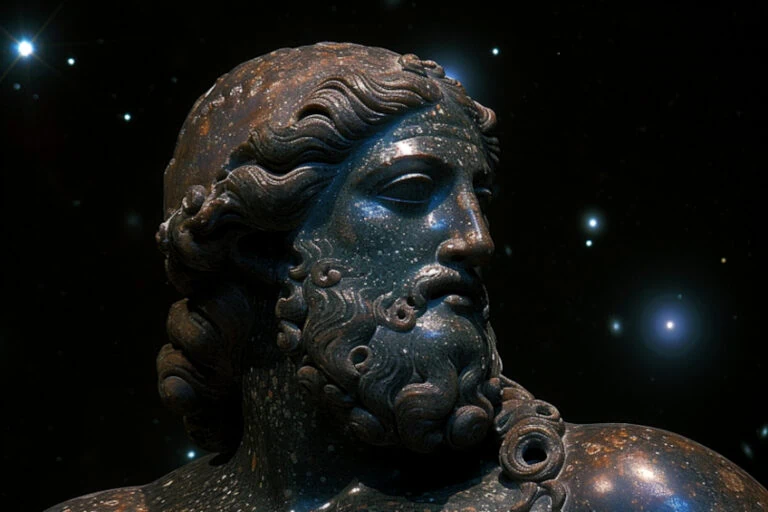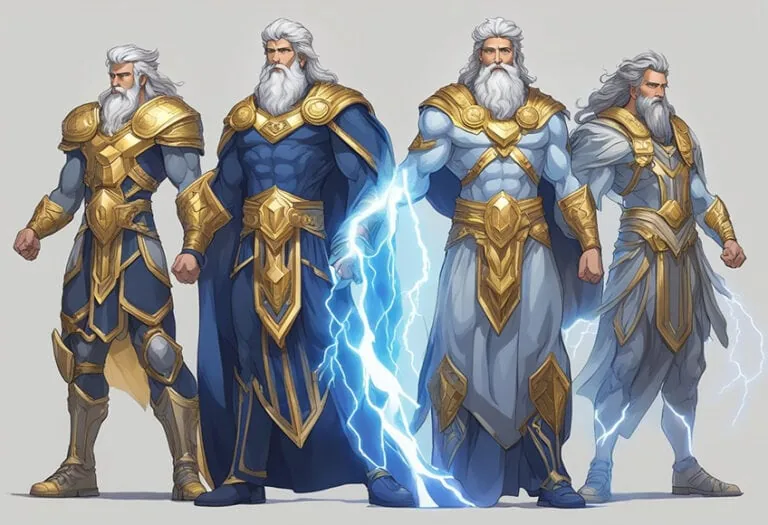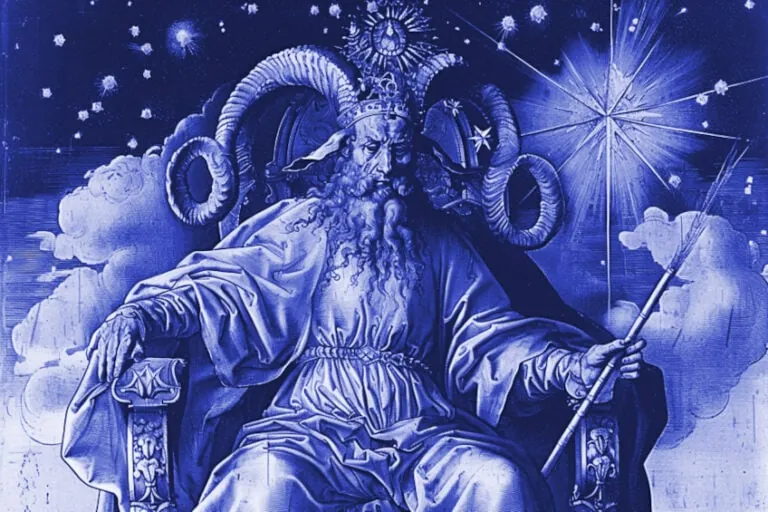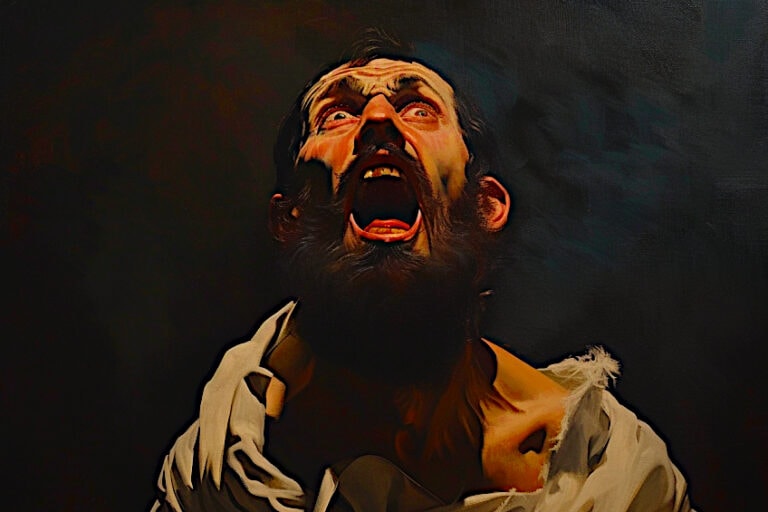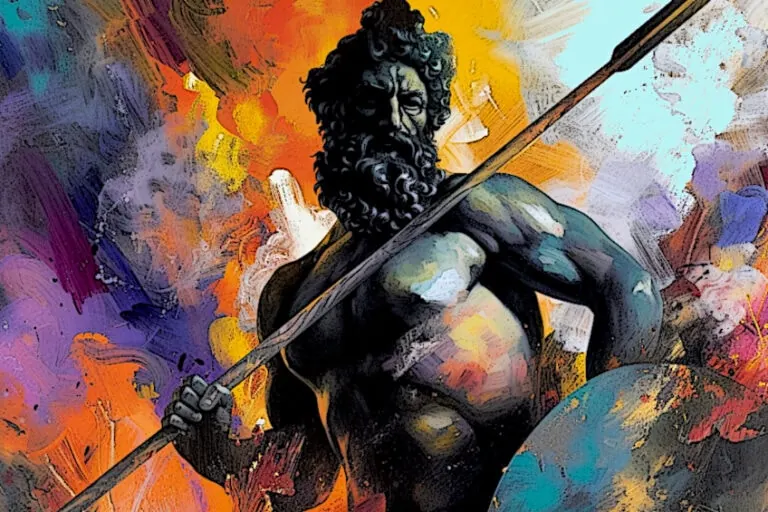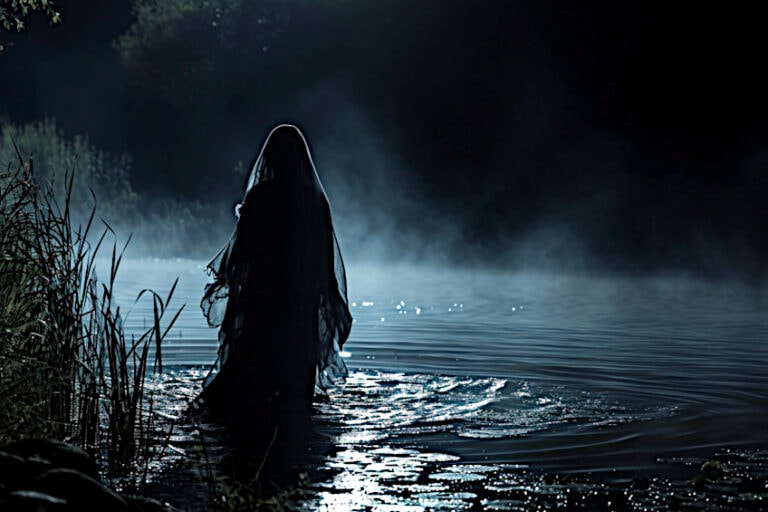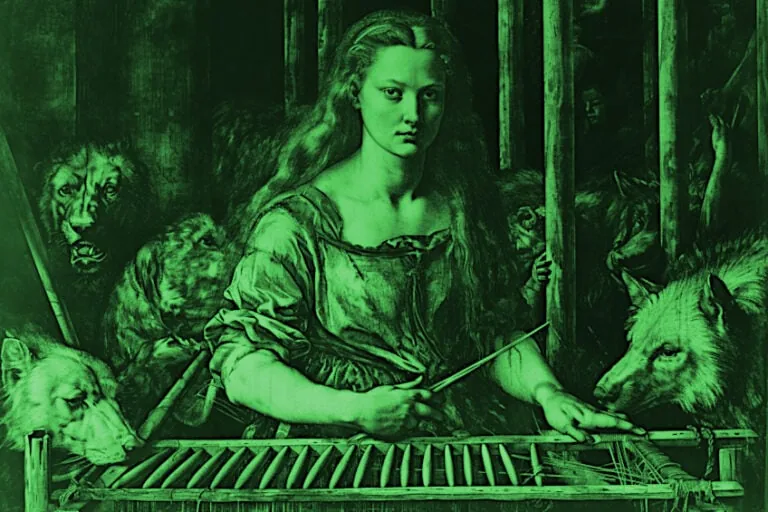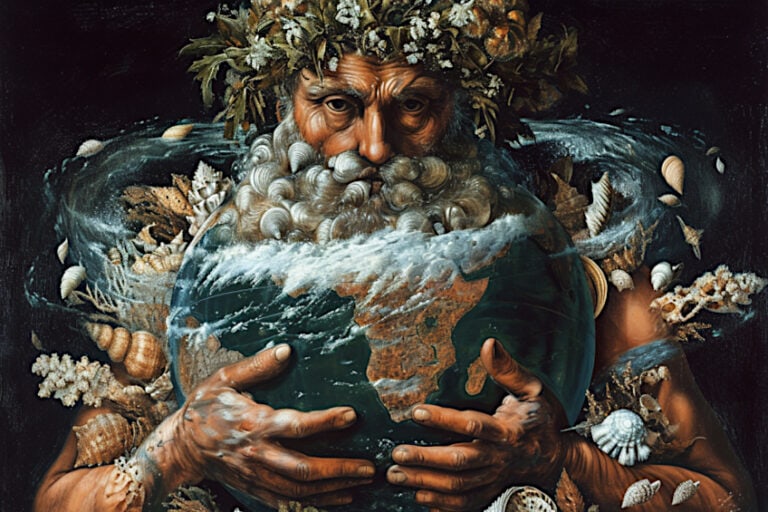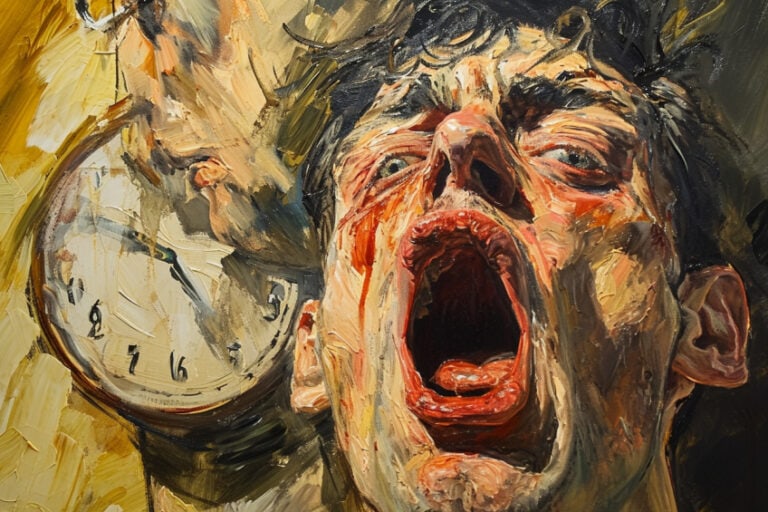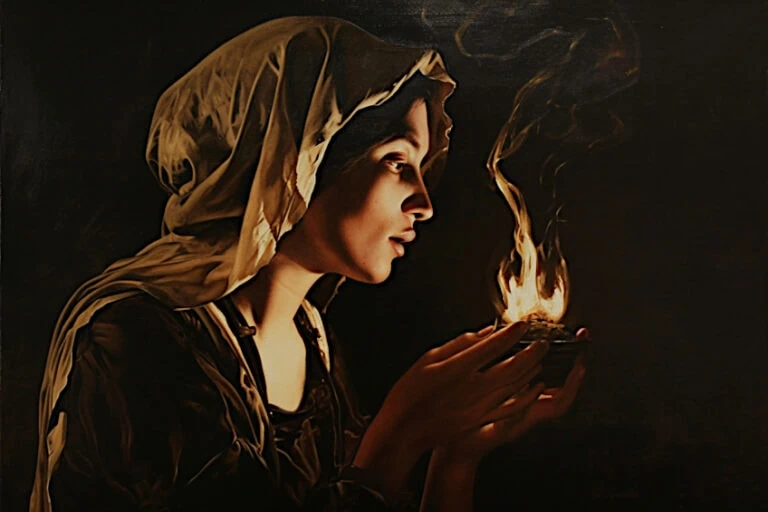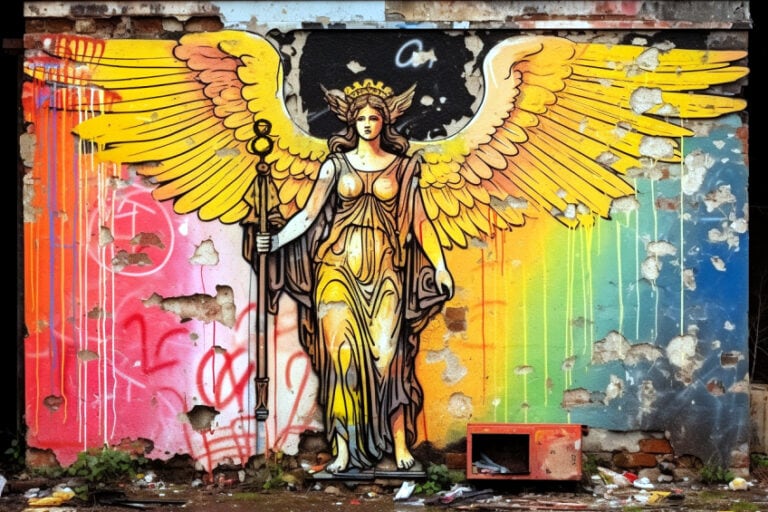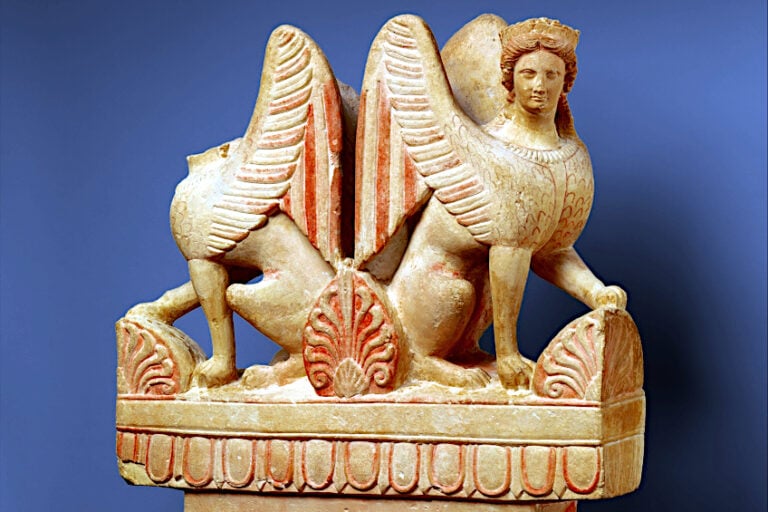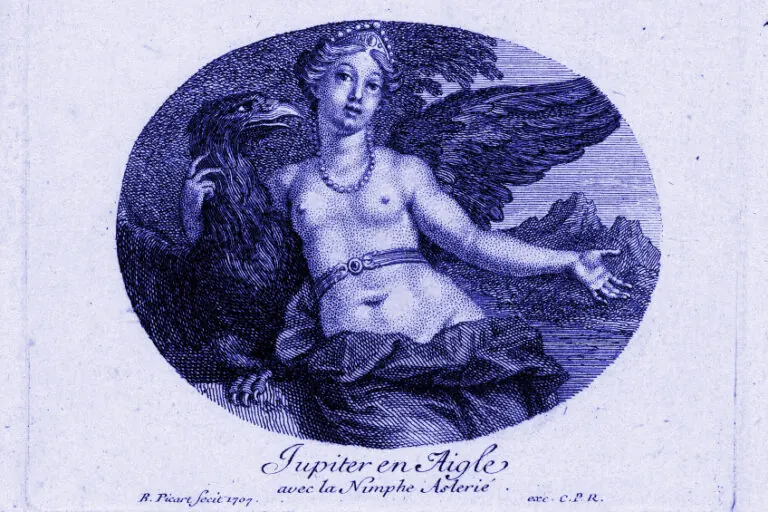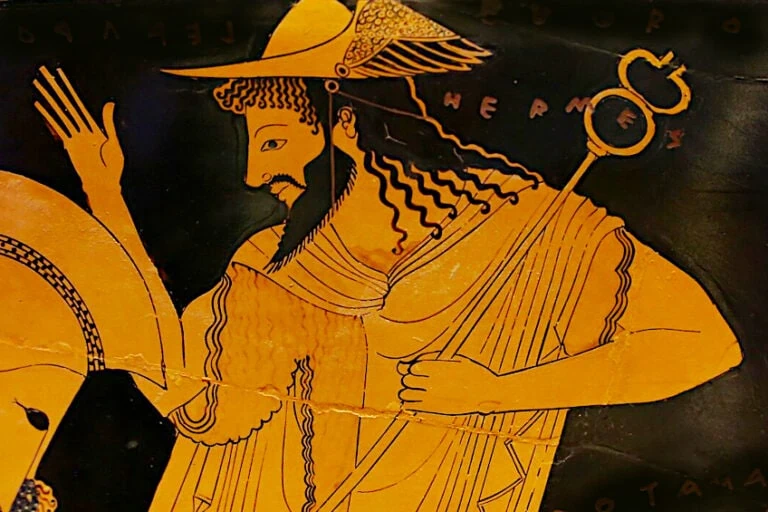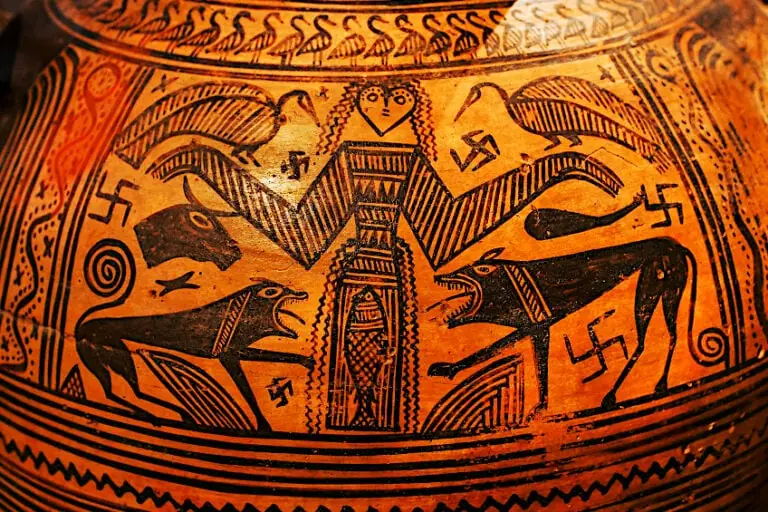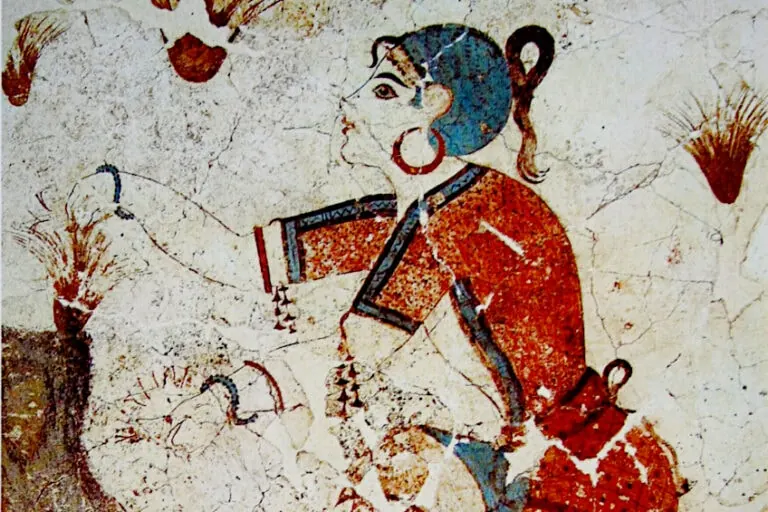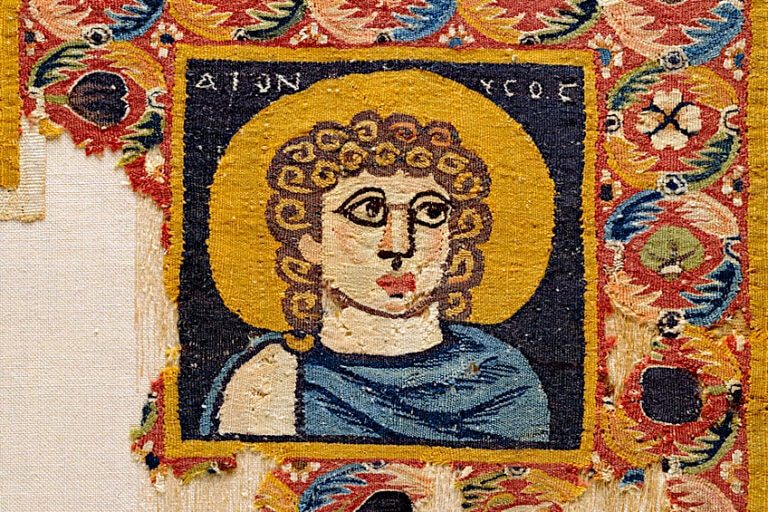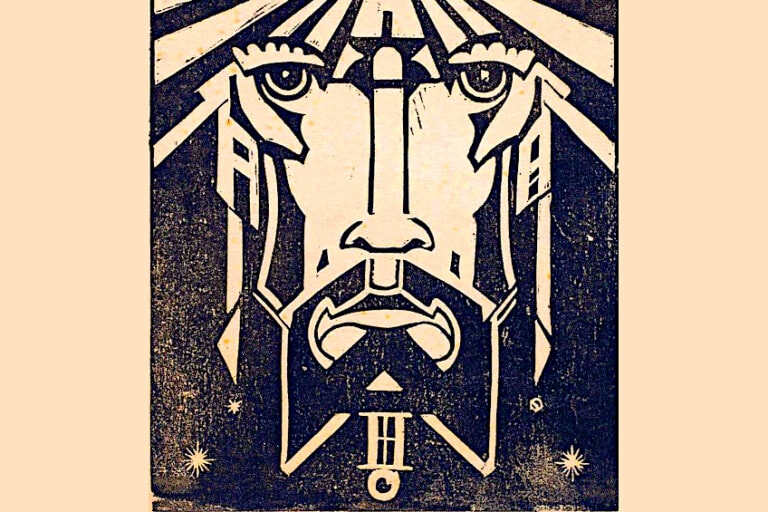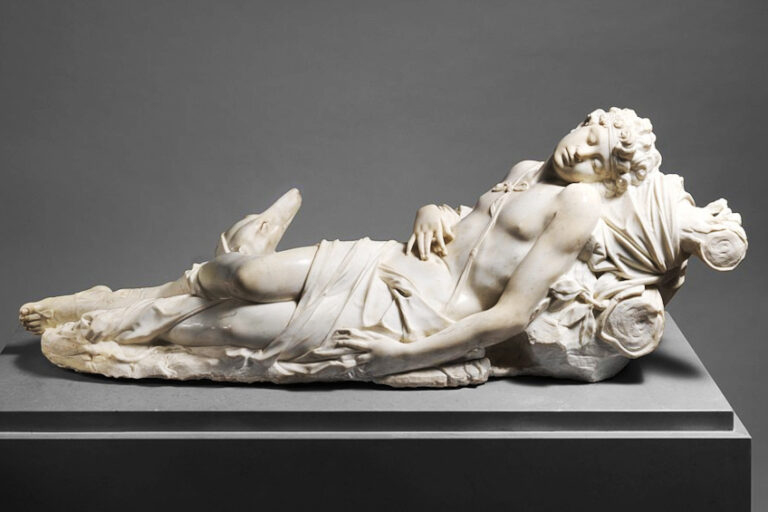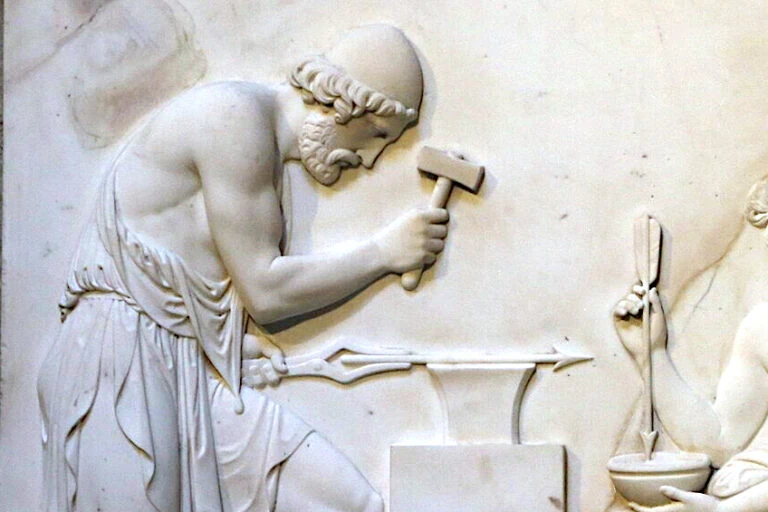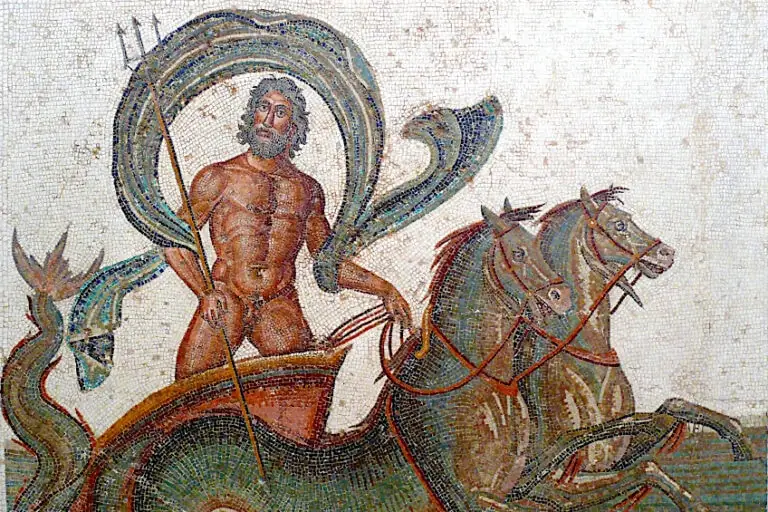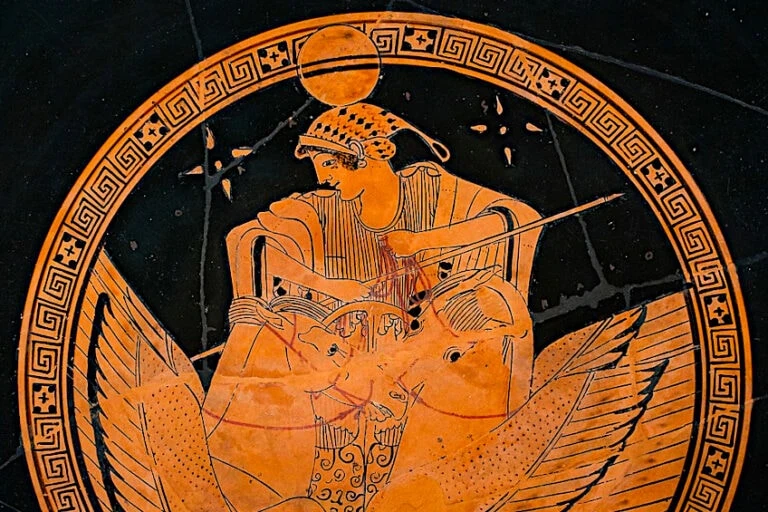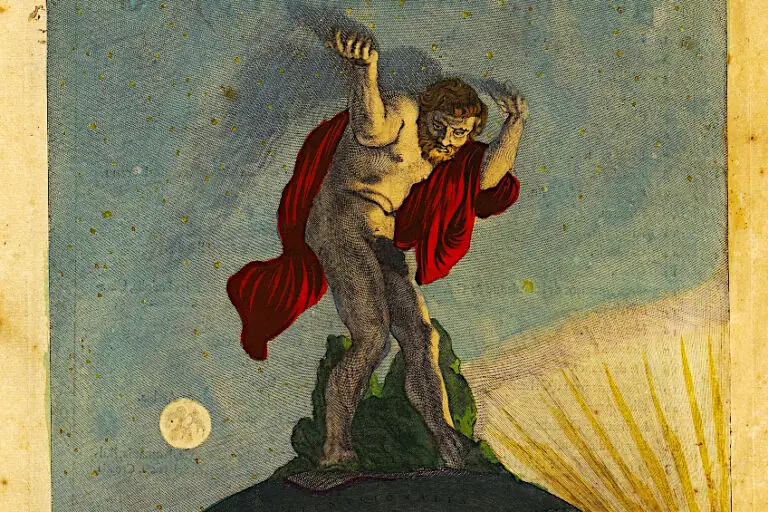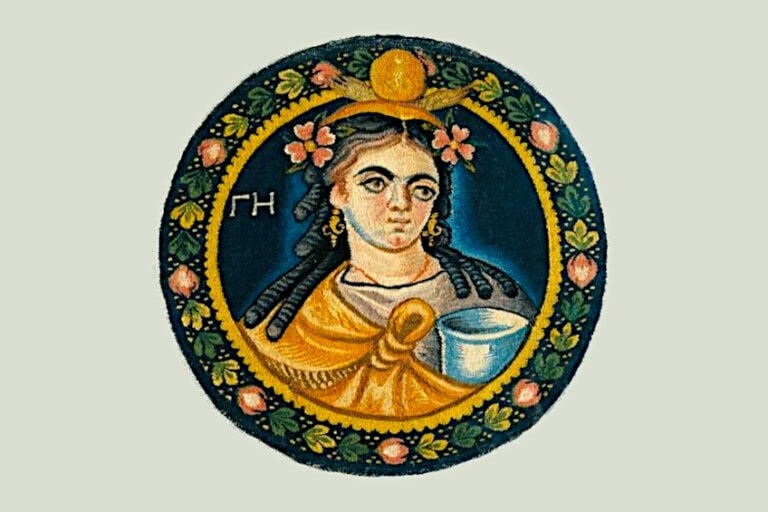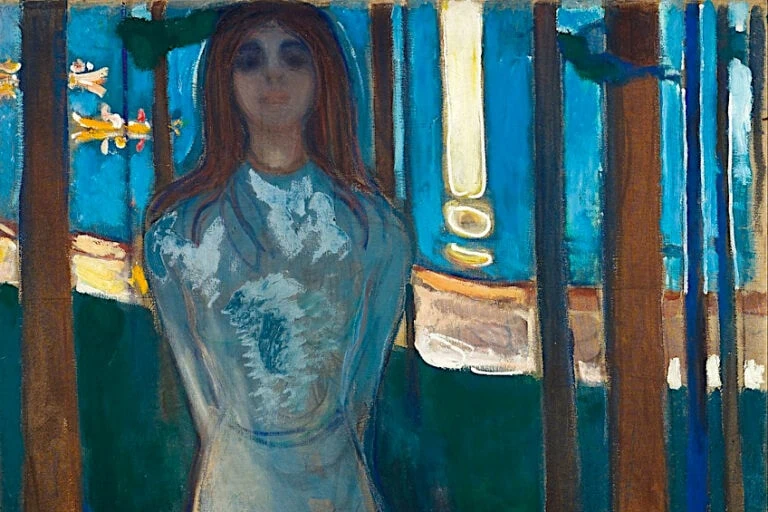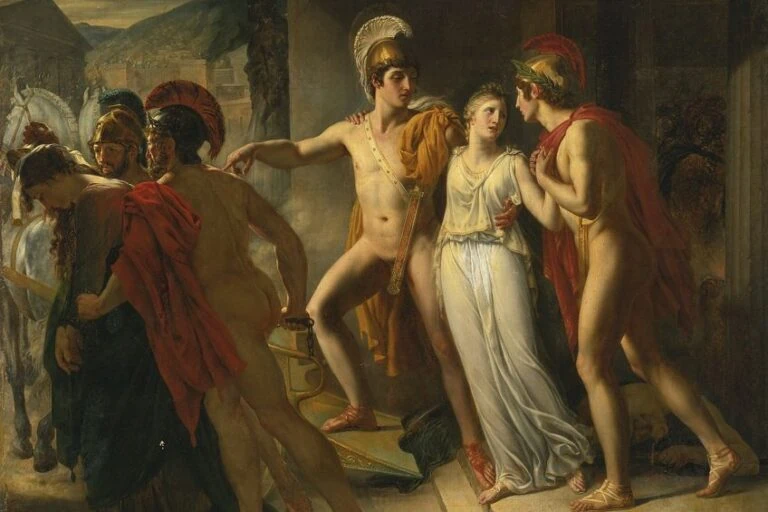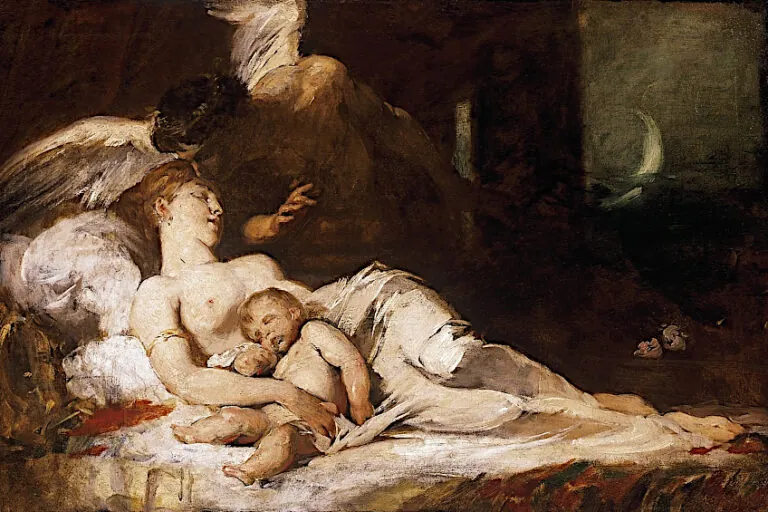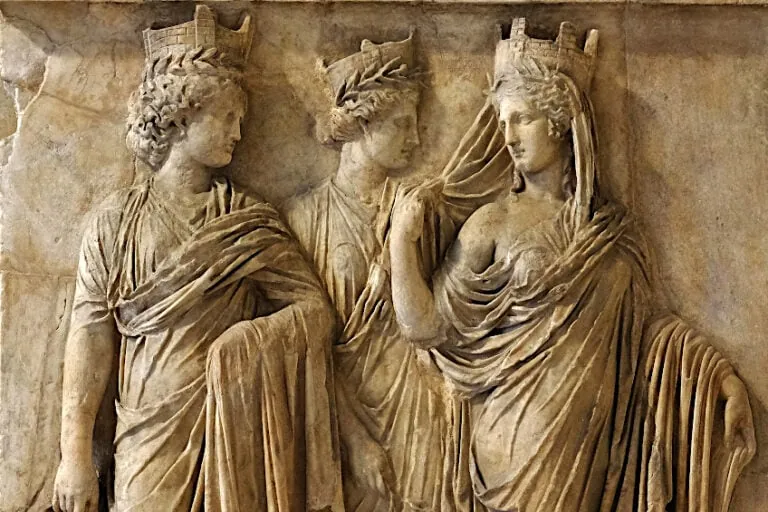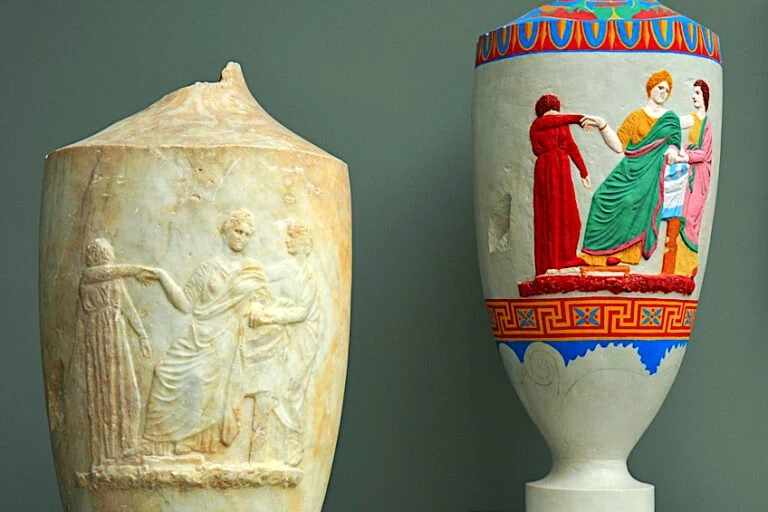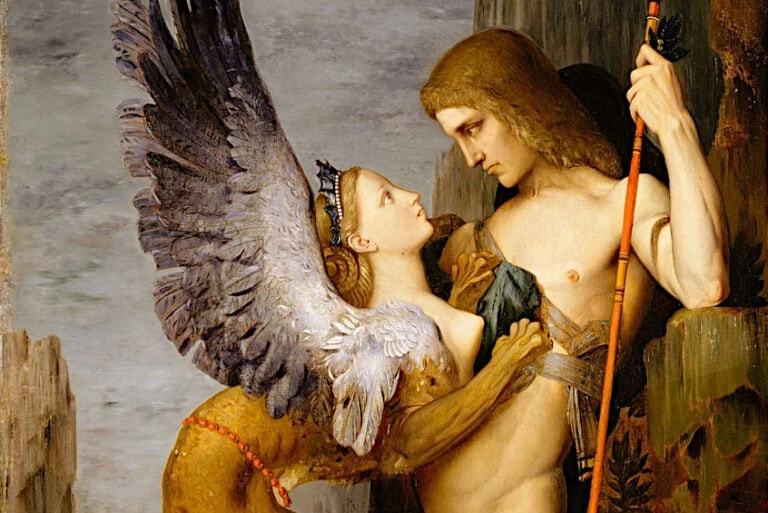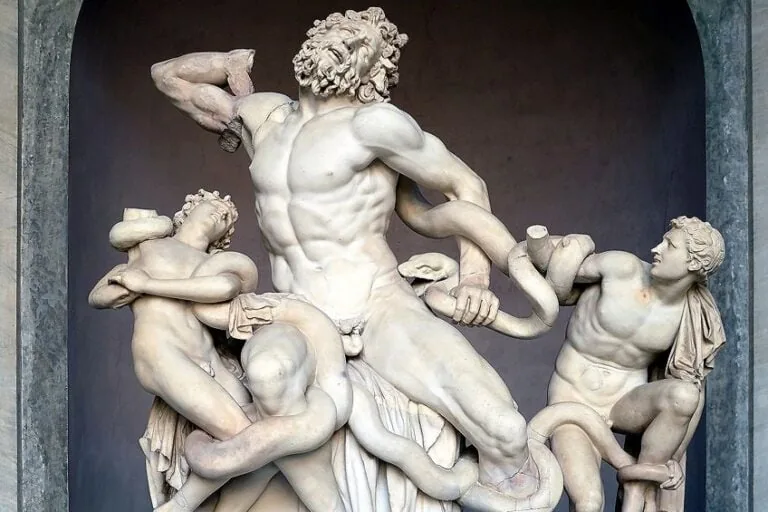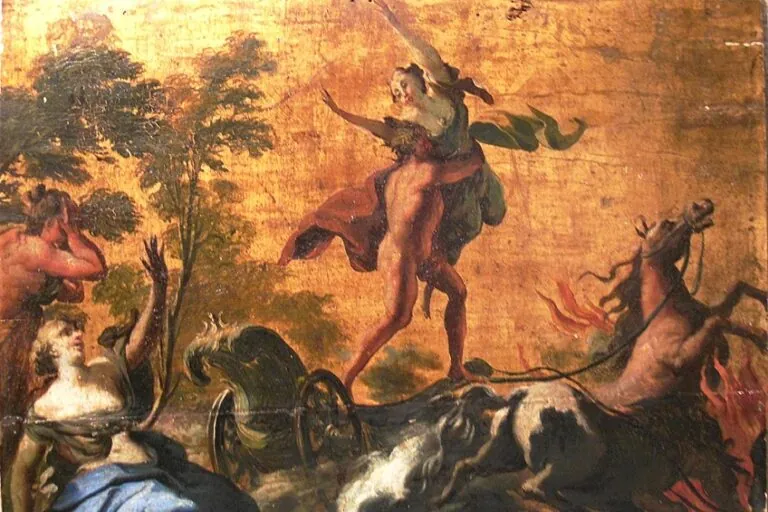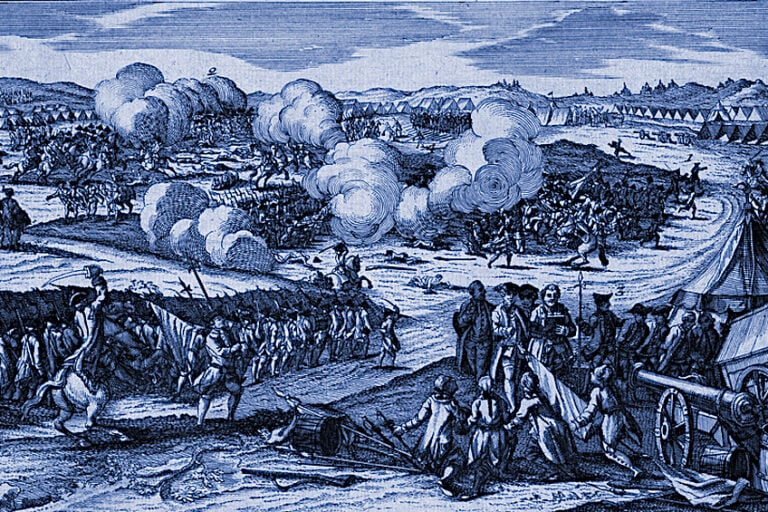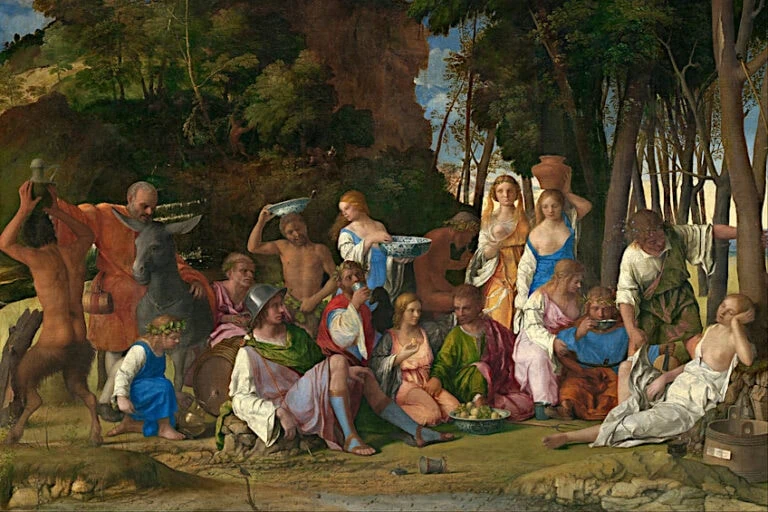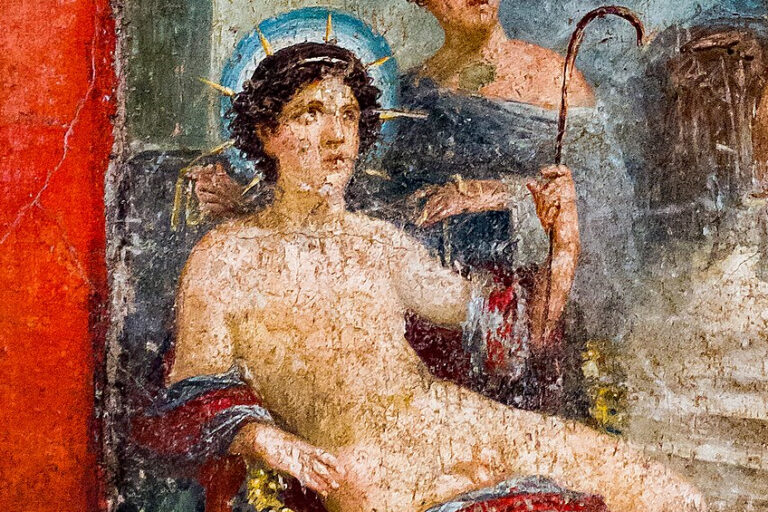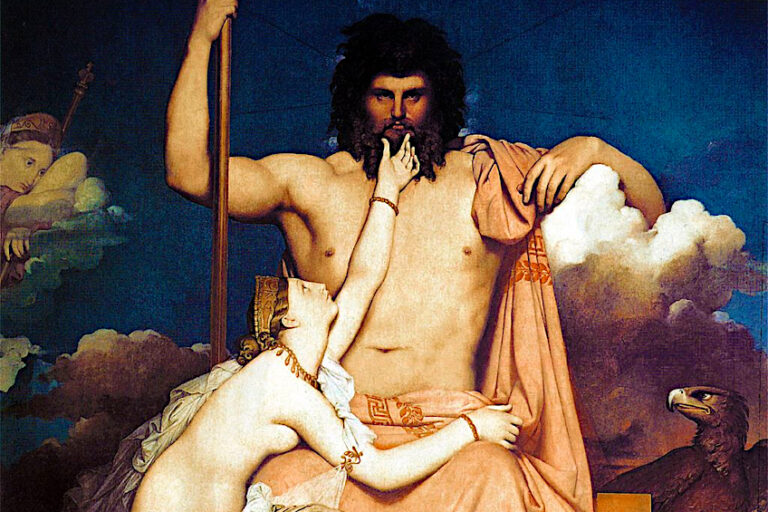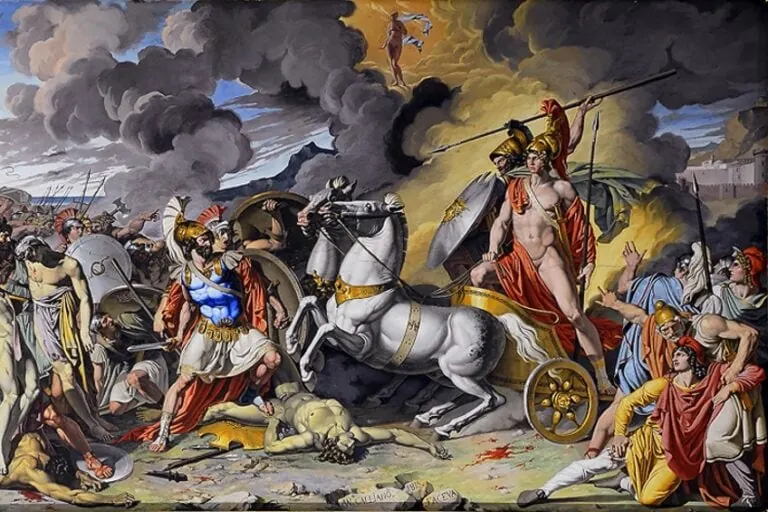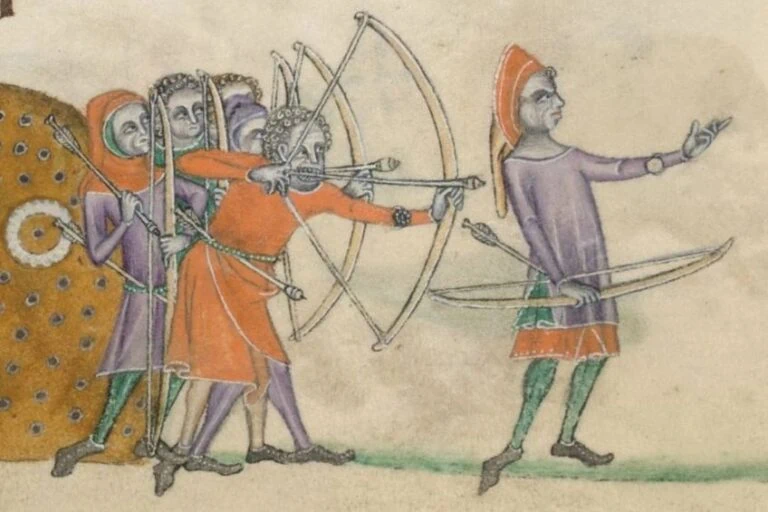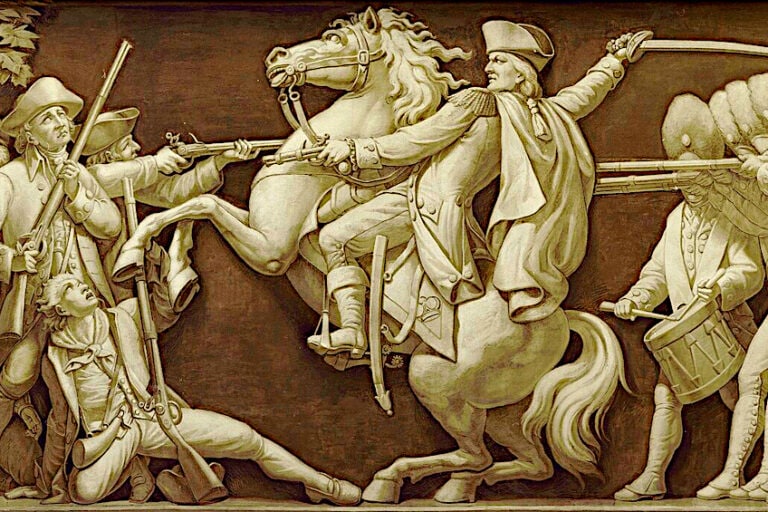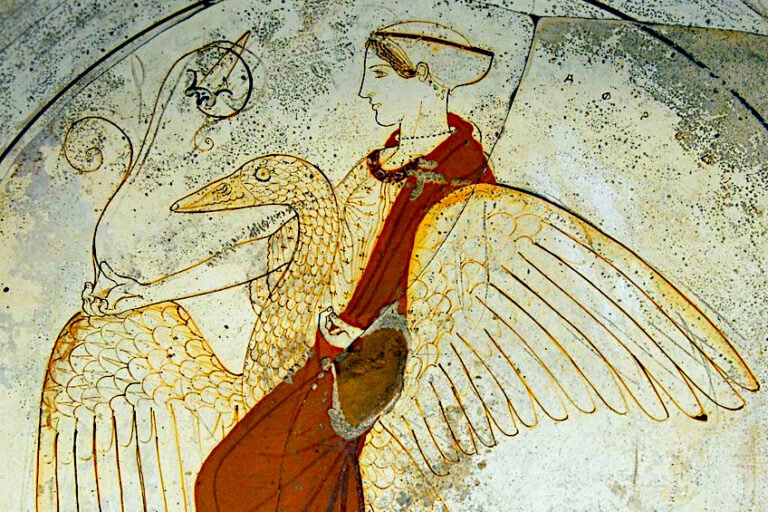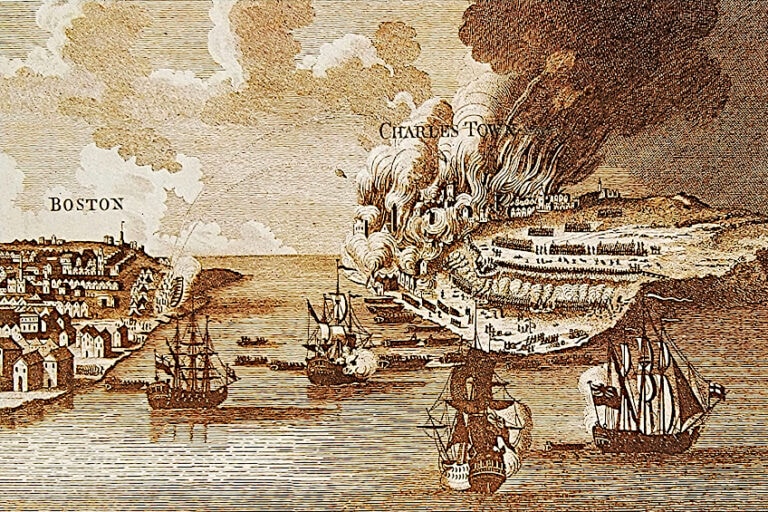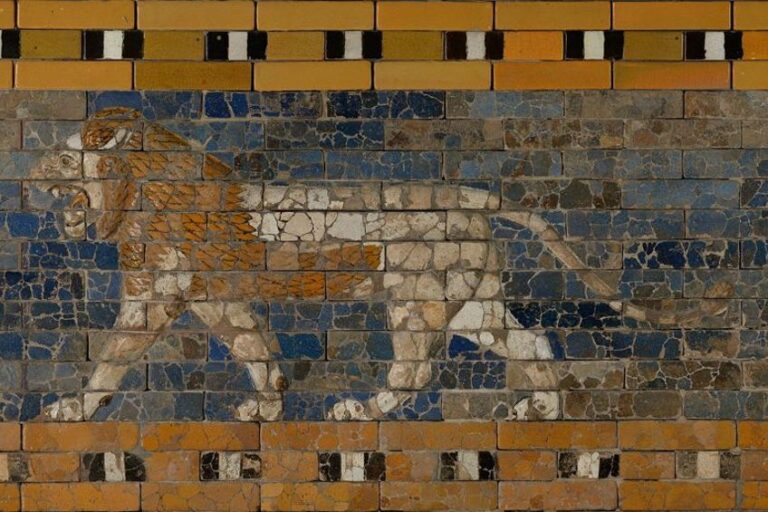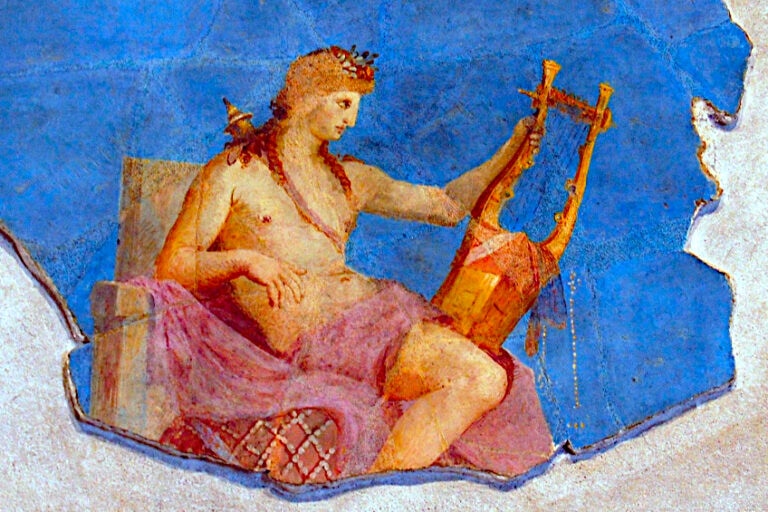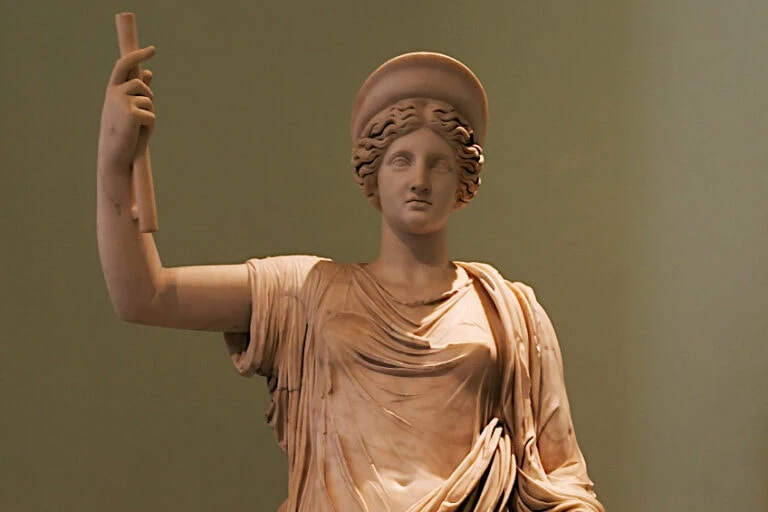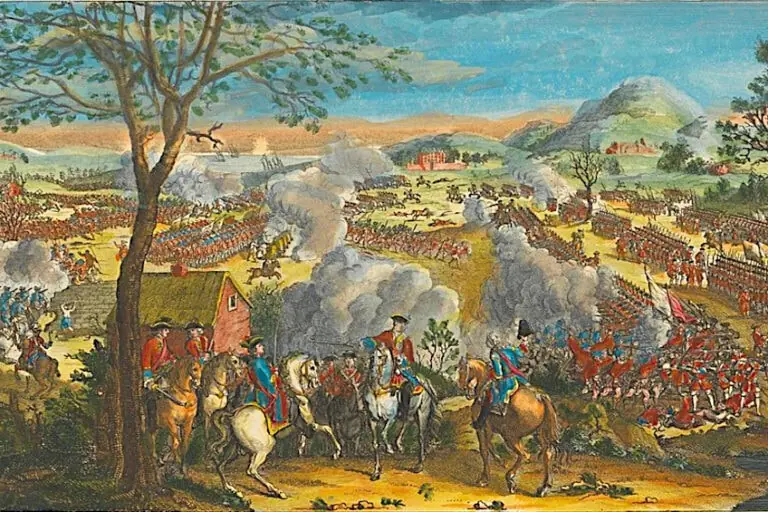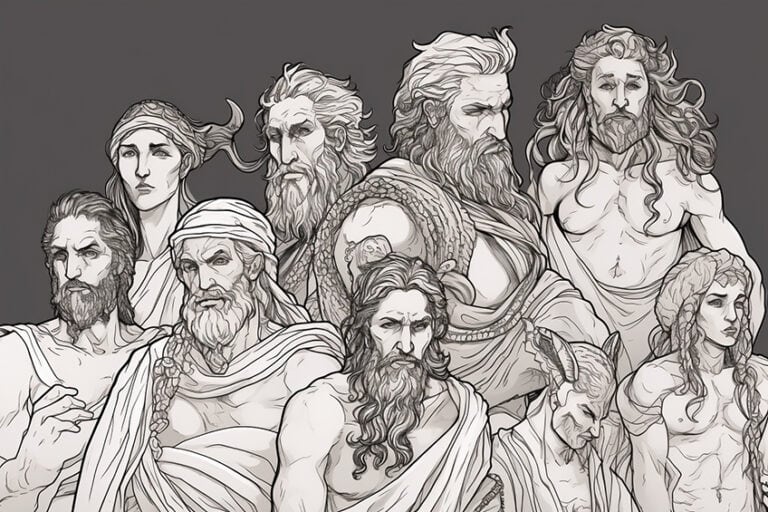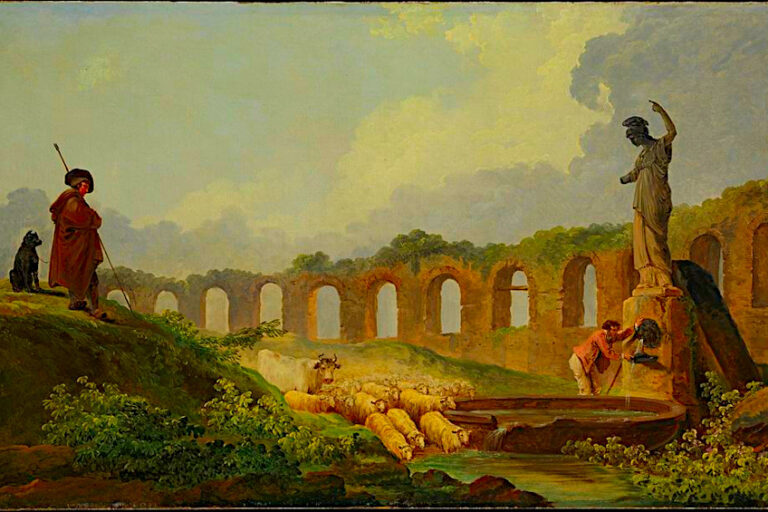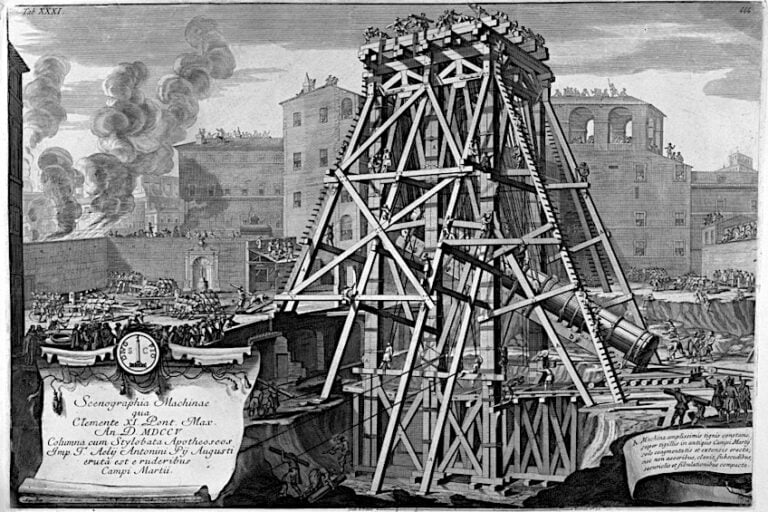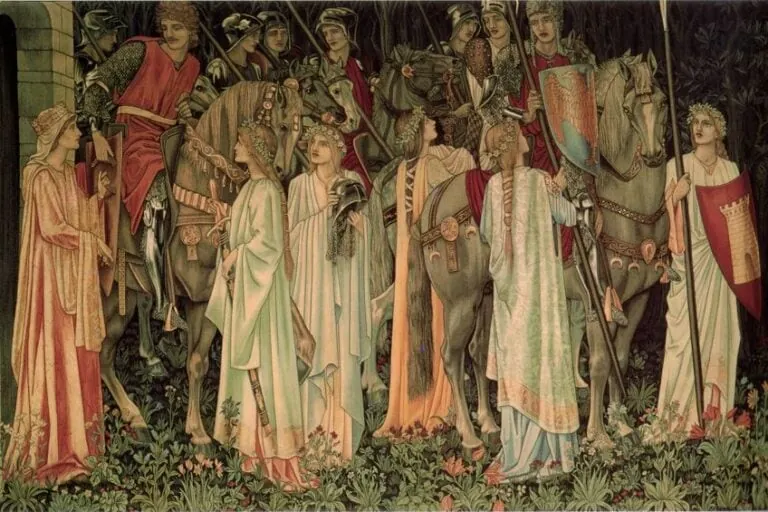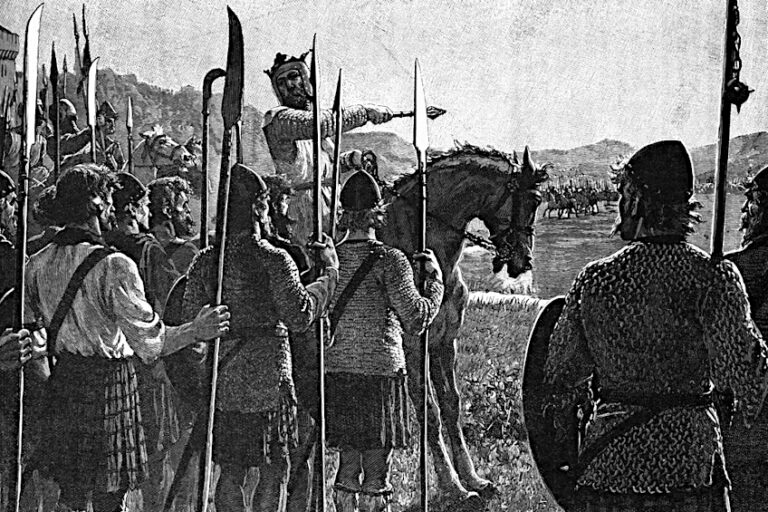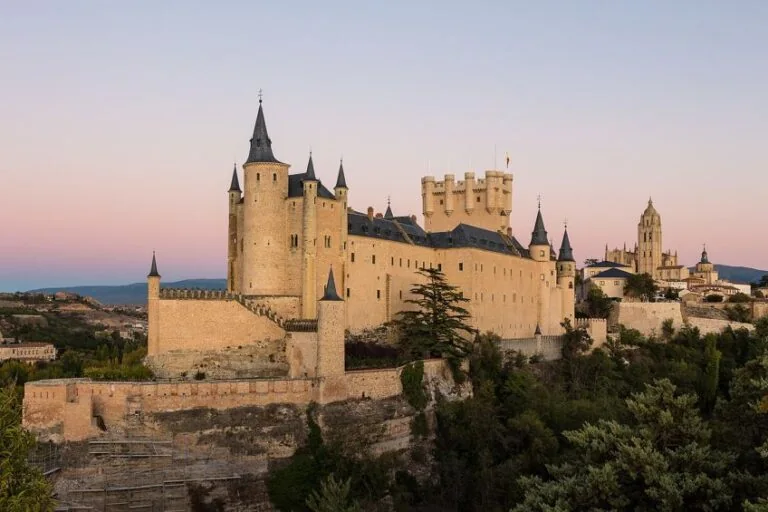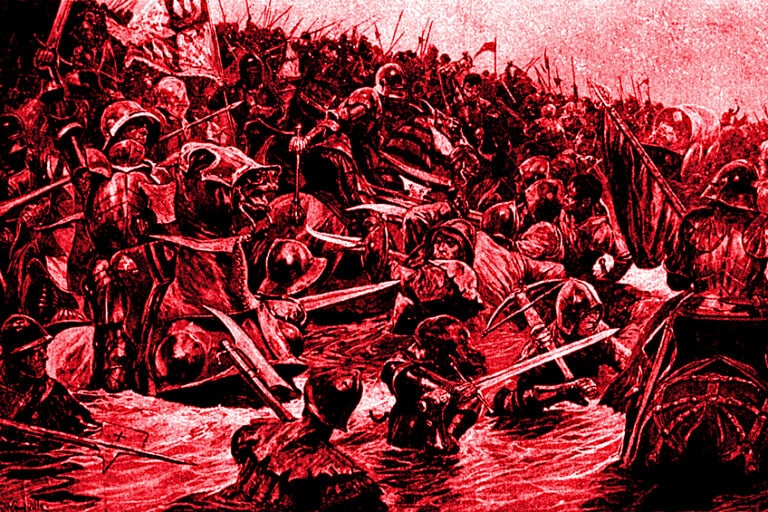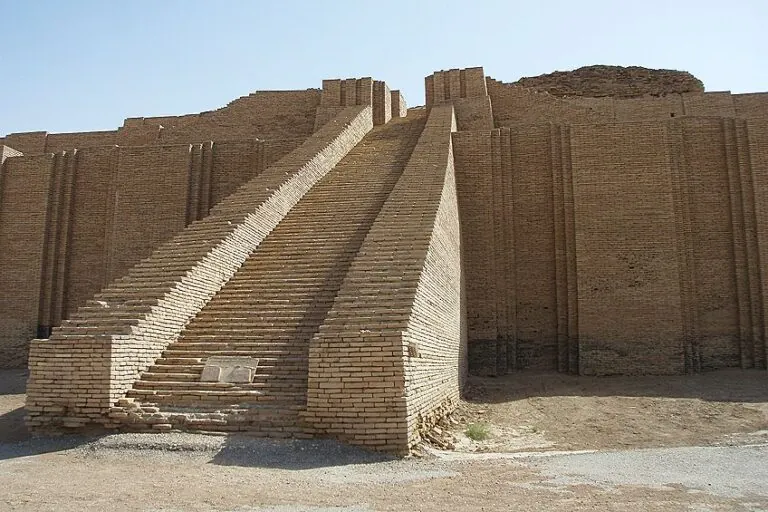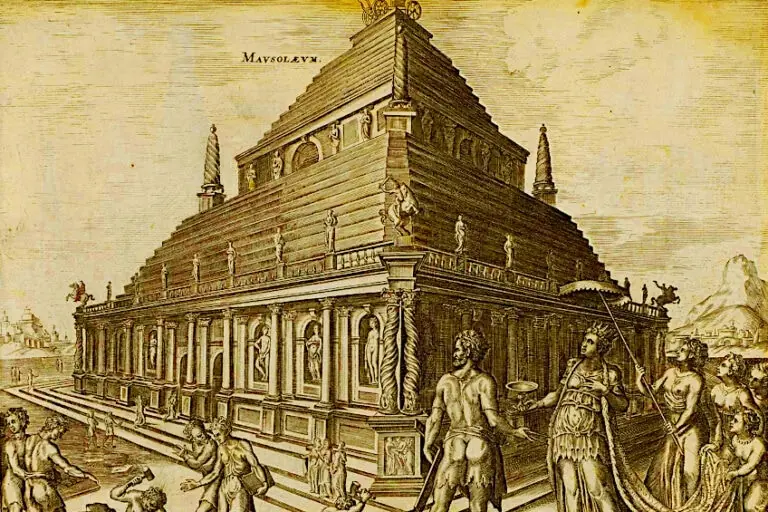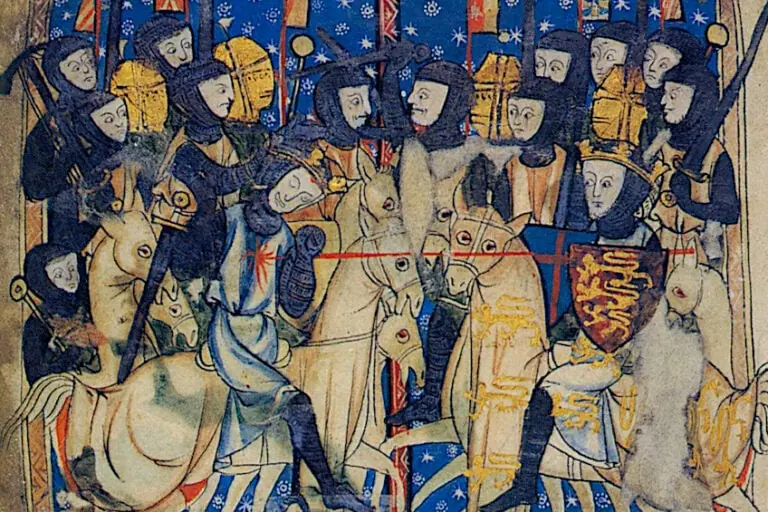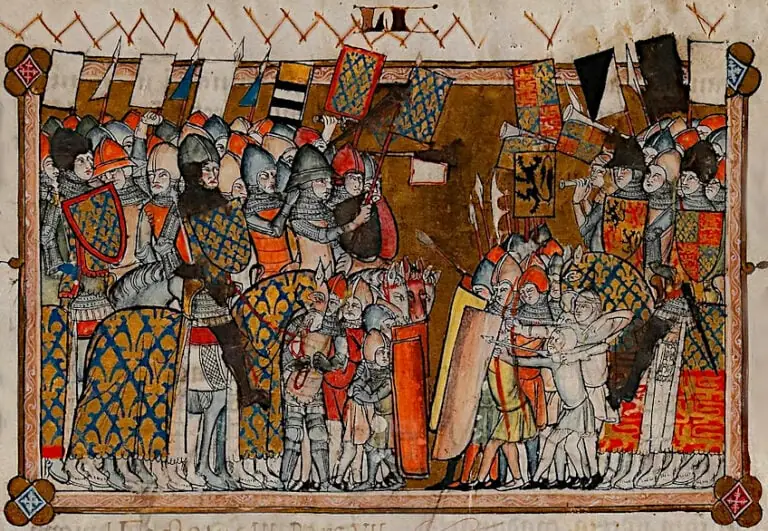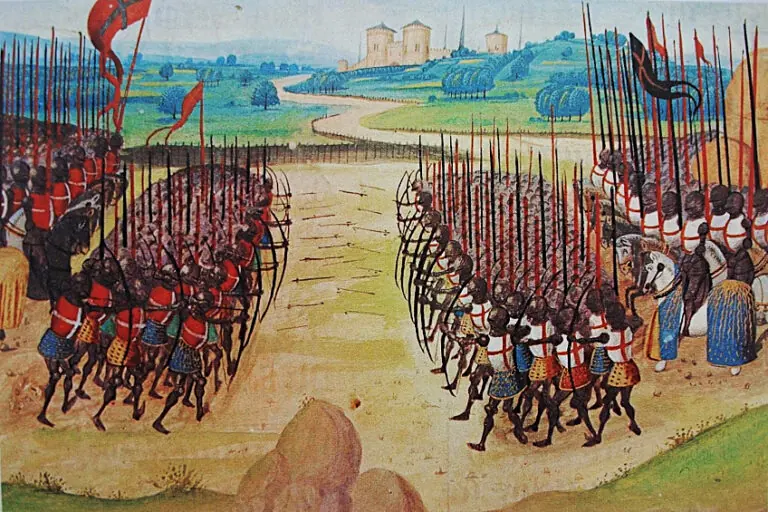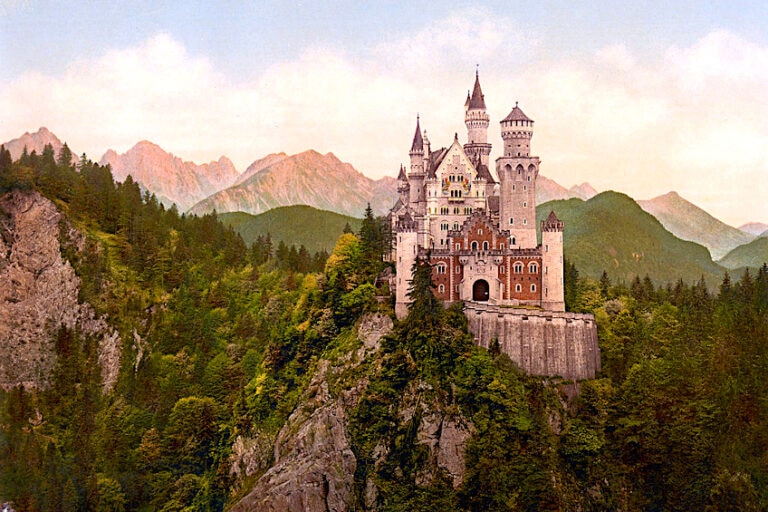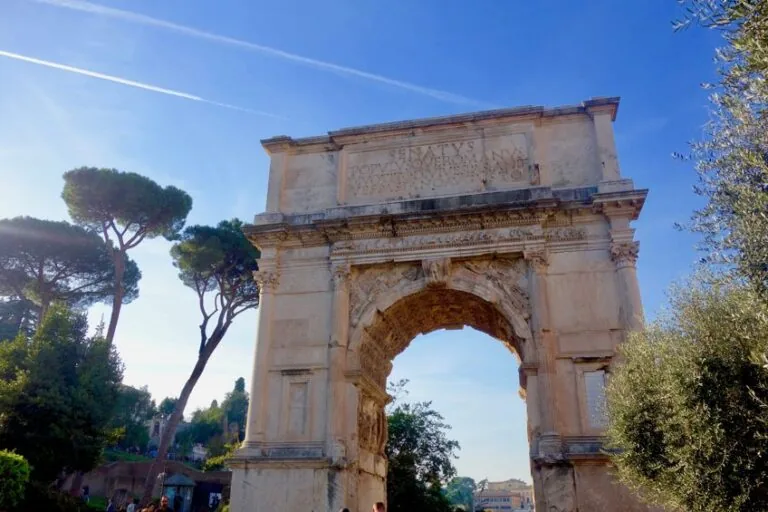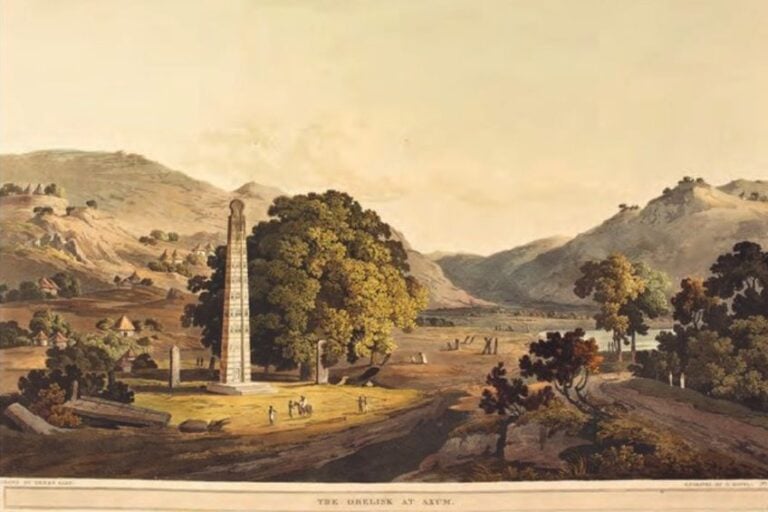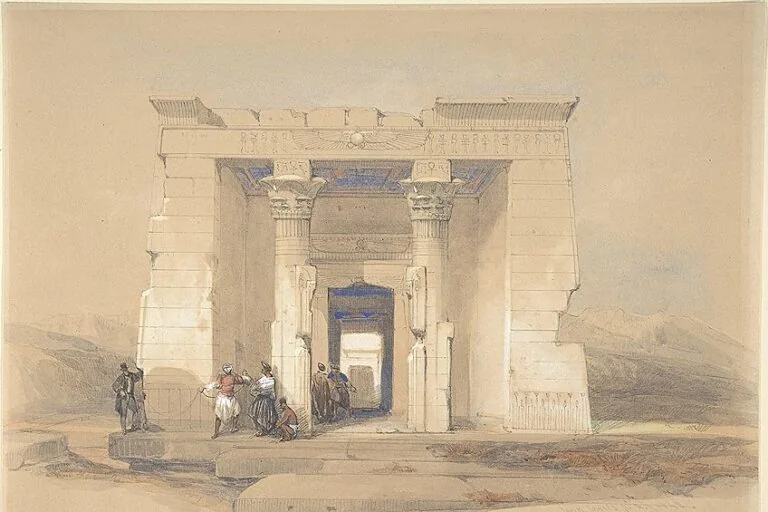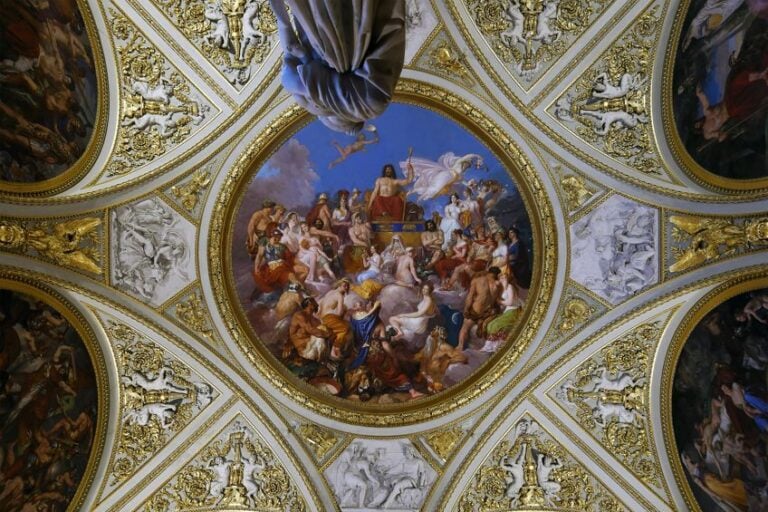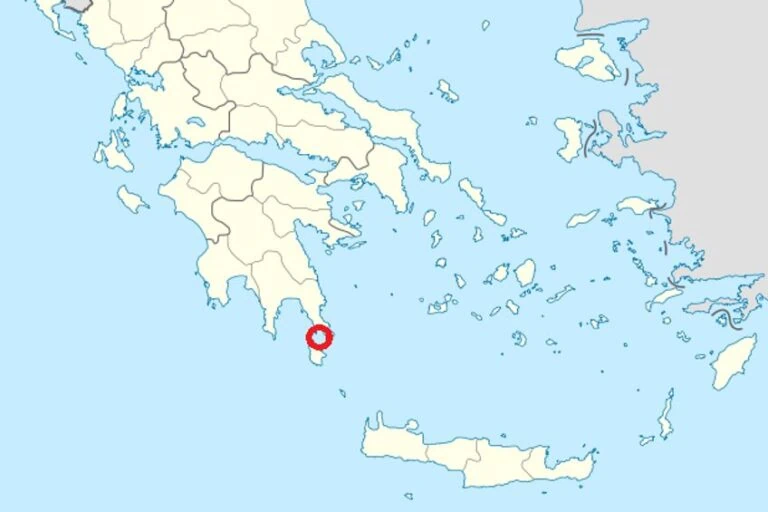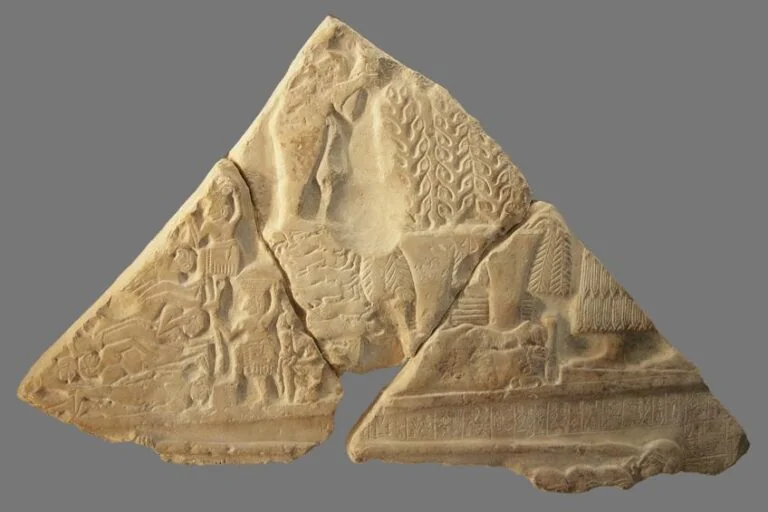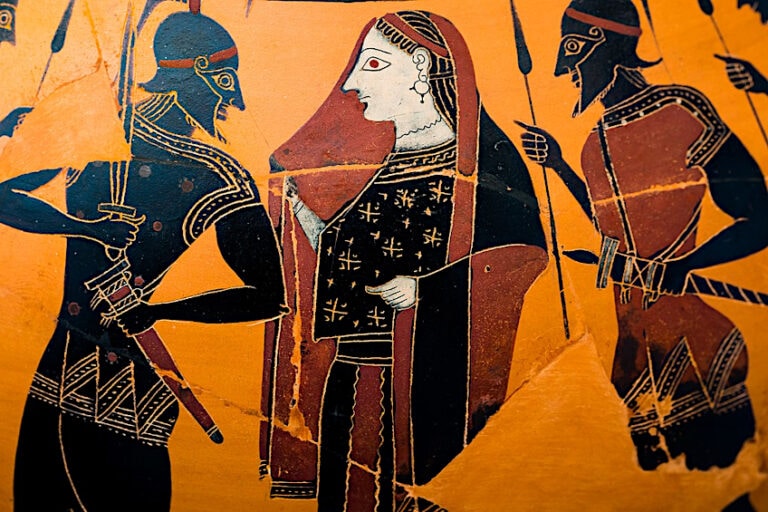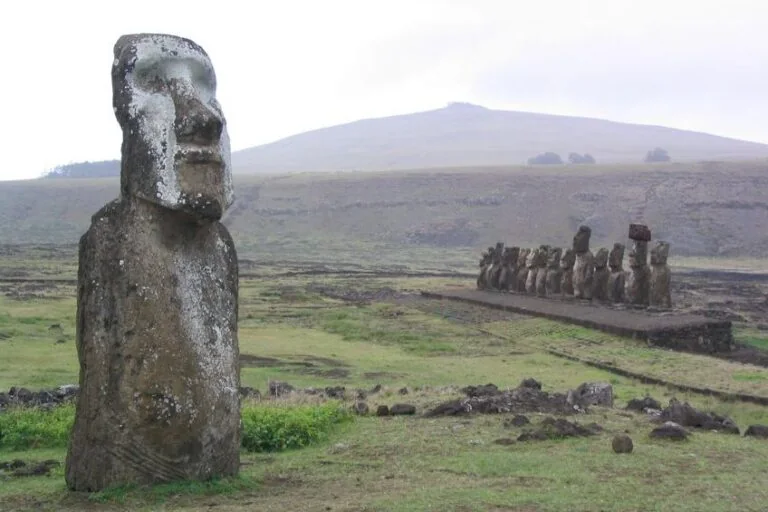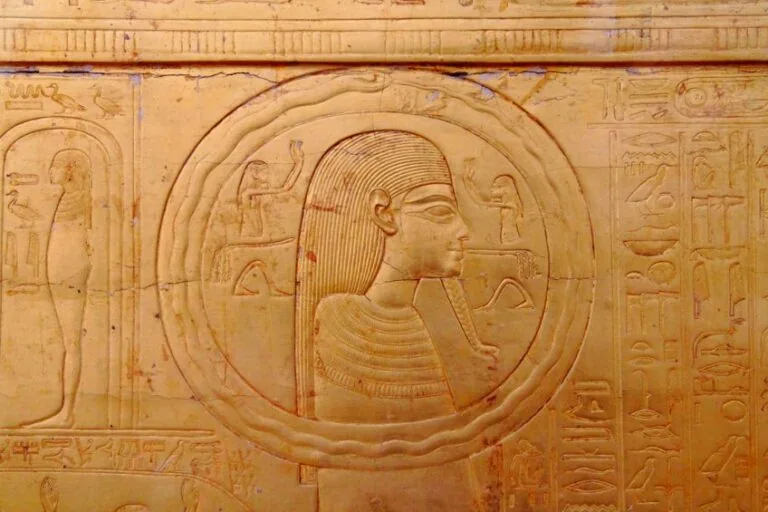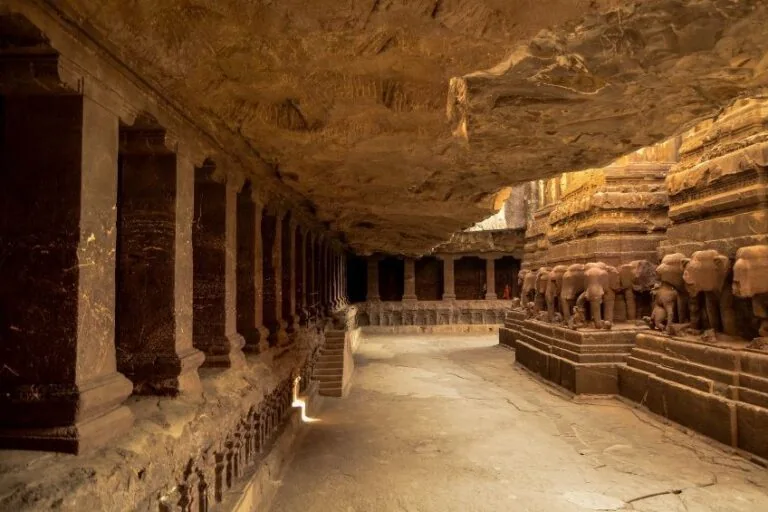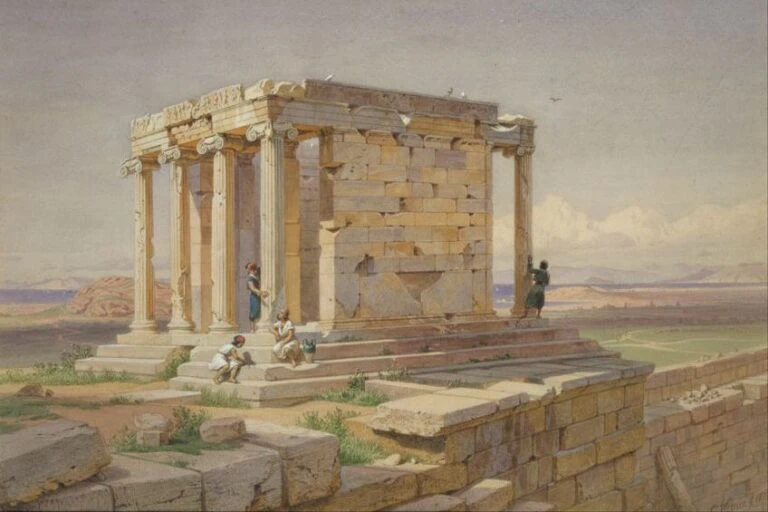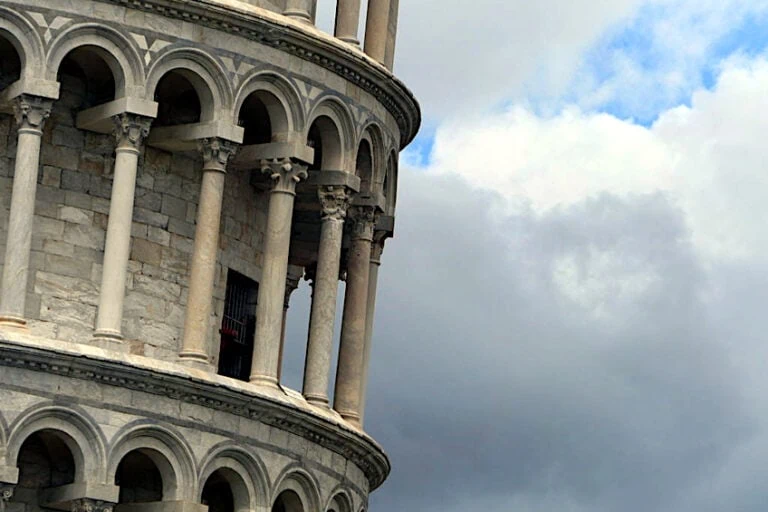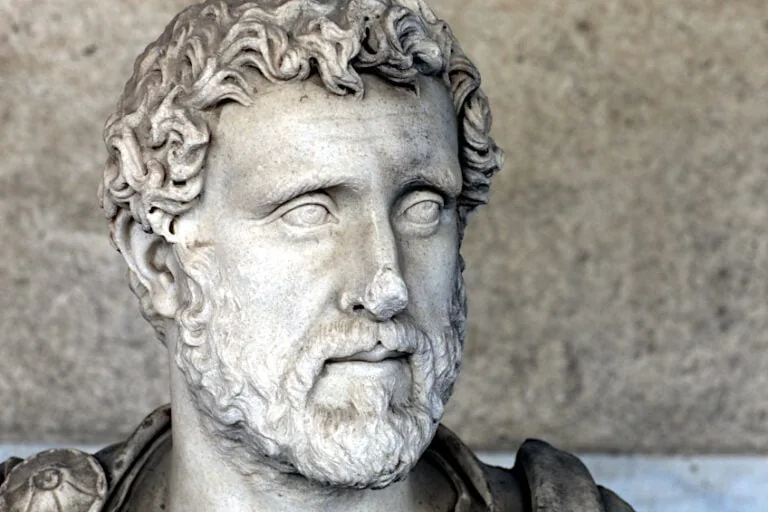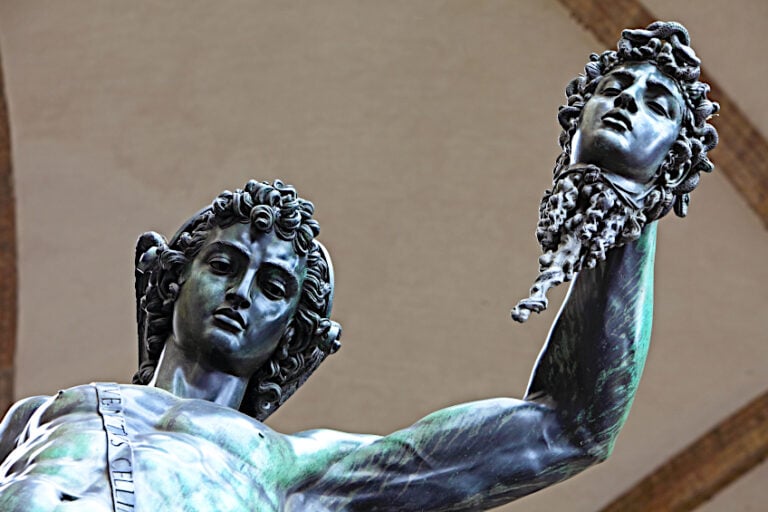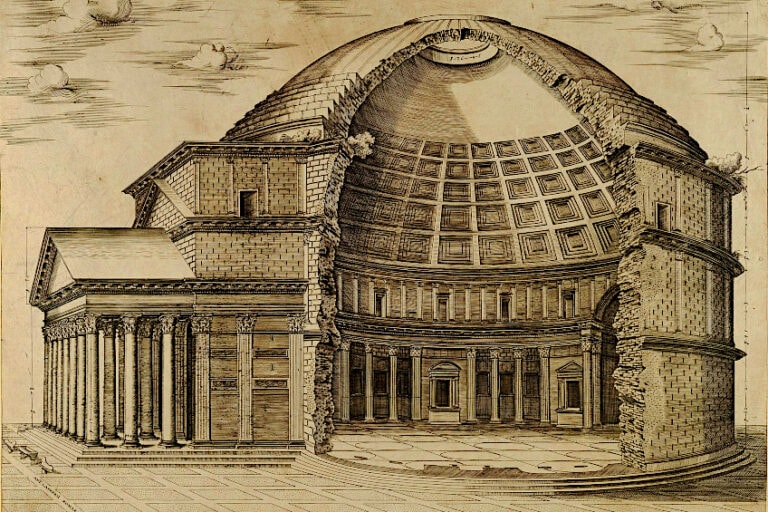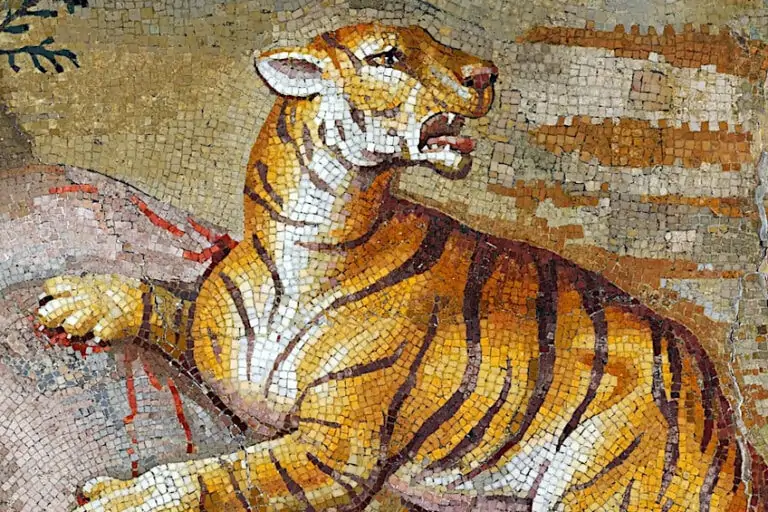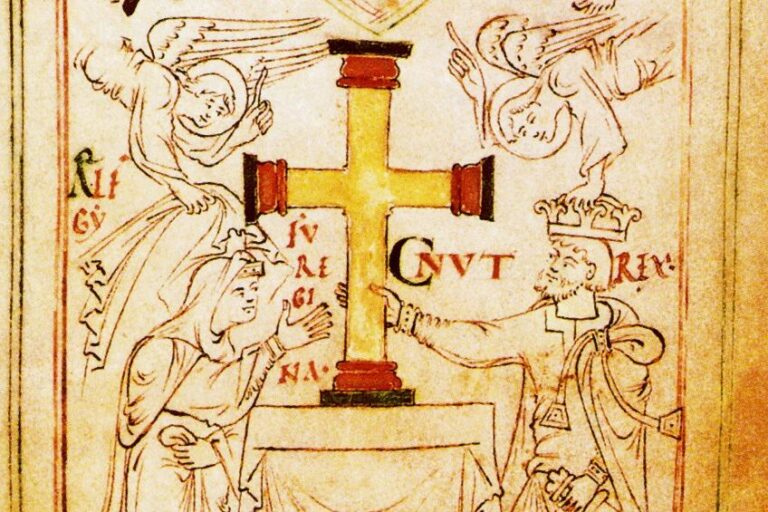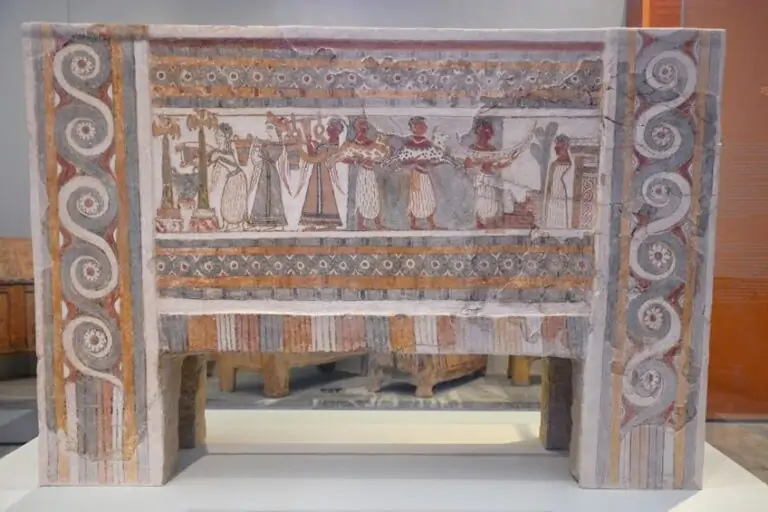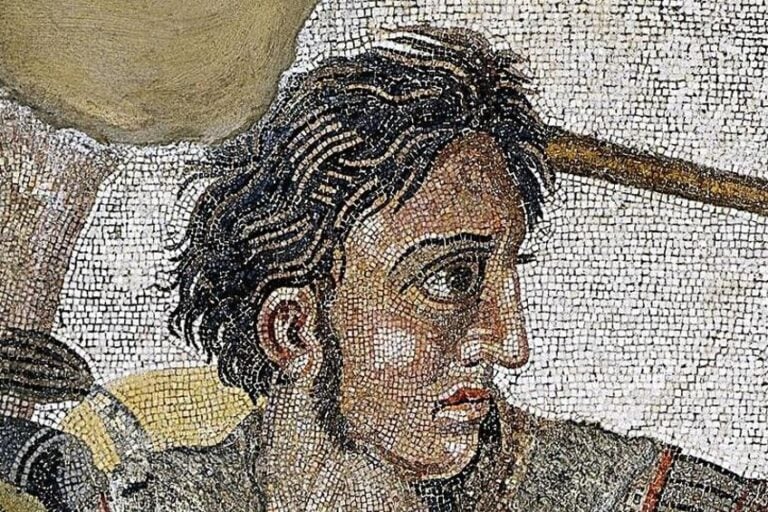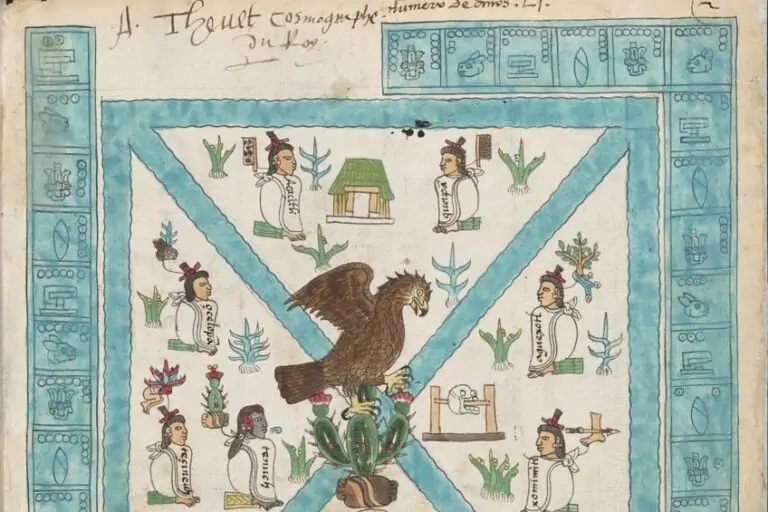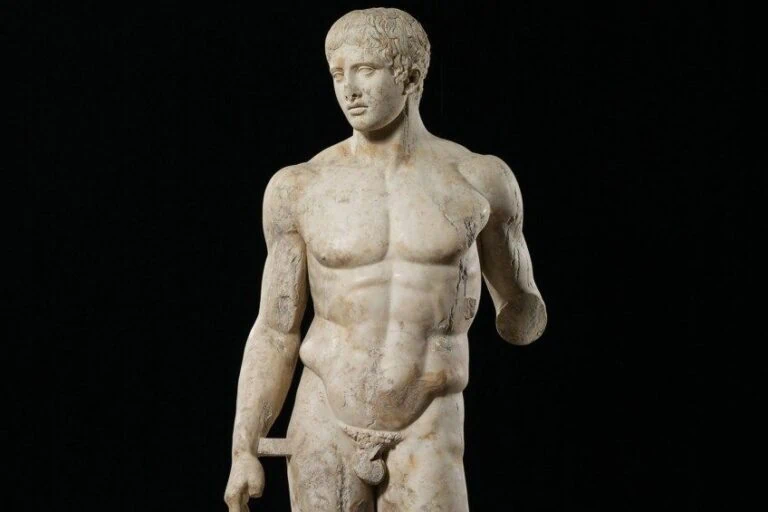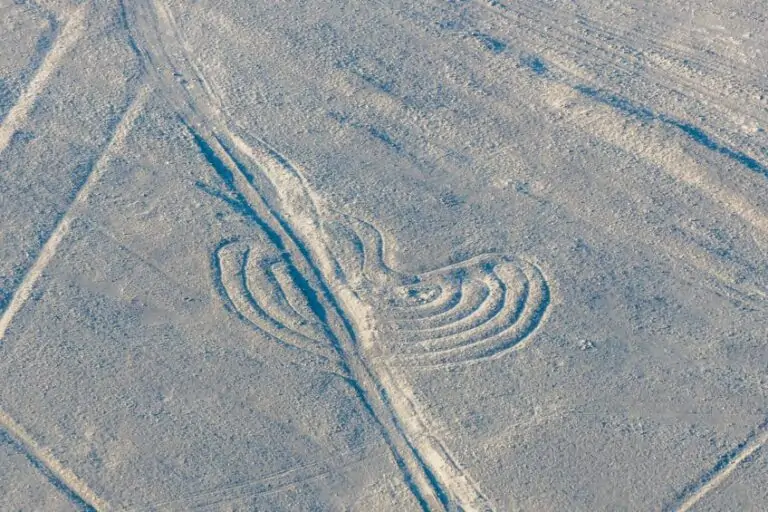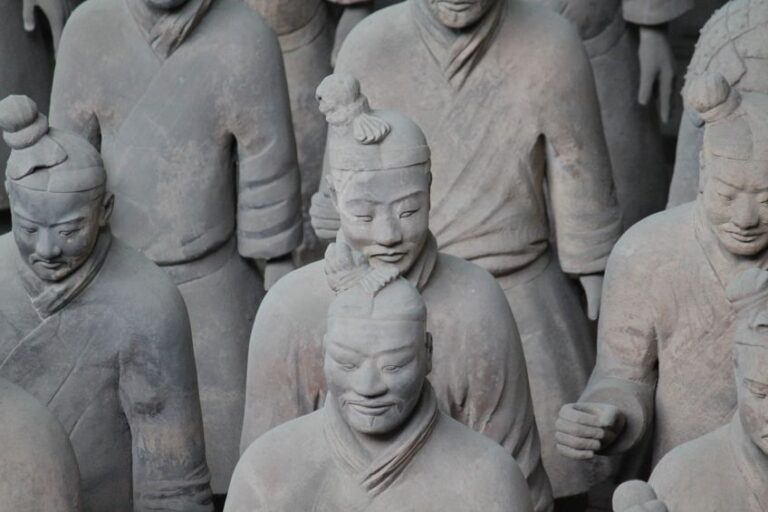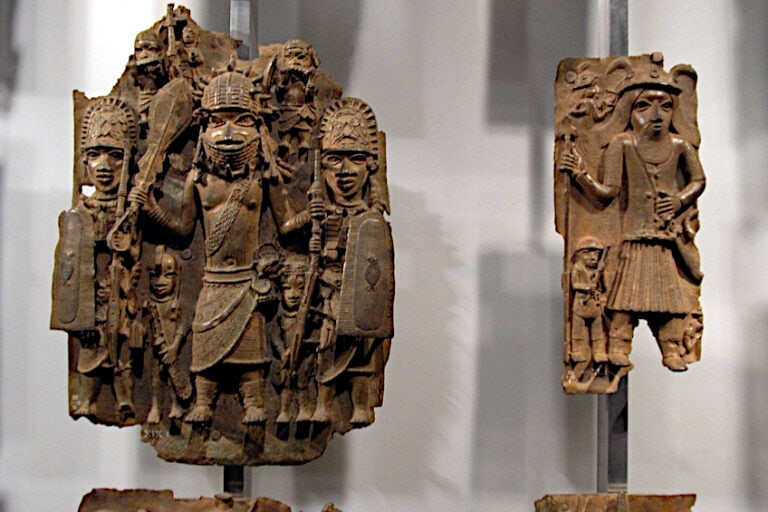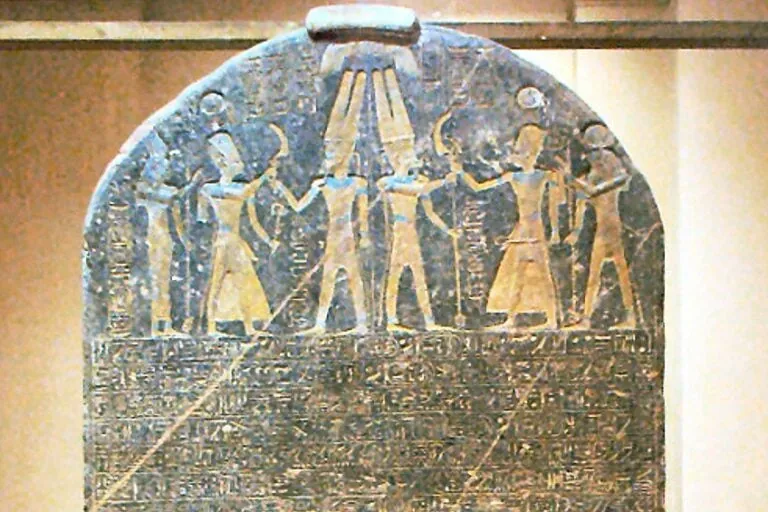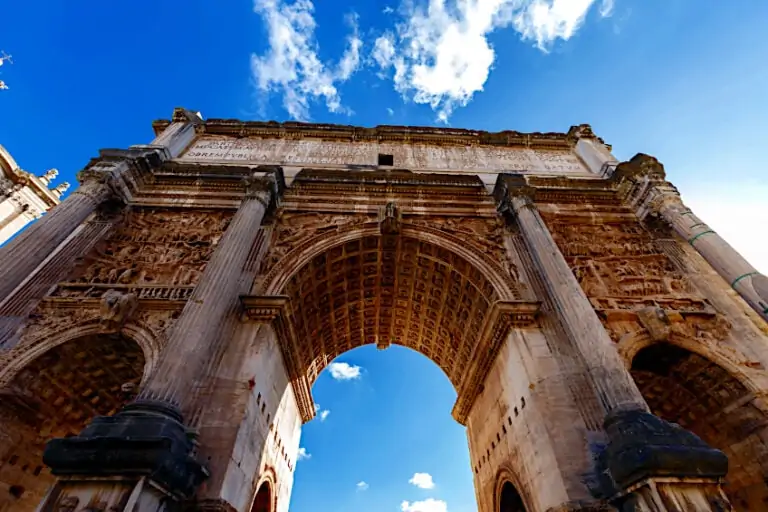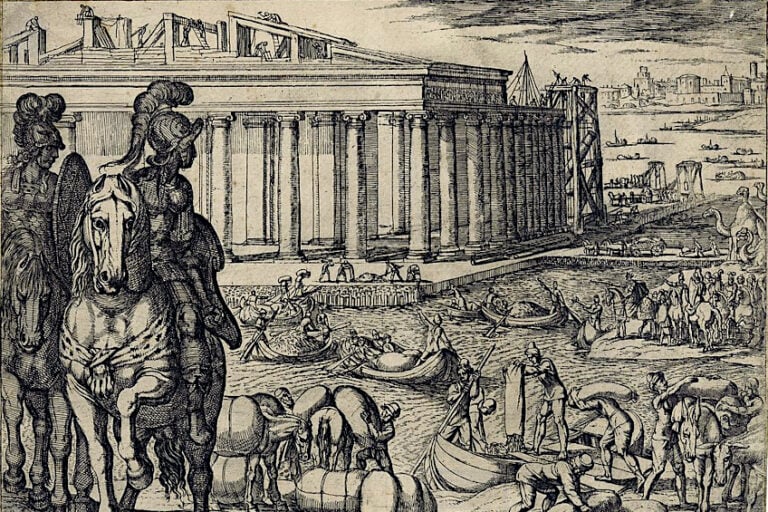Latest Blog Posts:
Greek God Astraeus – Father of the Winds and Stars
The Greek god Astraeus is an important god when looking at how the Greeks conceptualized the world. While lesser known than his wife Eos, the dawn, this father-god of stars and winds is vital as the origin of the most intimate natural forces one can experience. While little is known of him directly, his presence…
Siblings of Zeus – The Mighty Figures of Greek Mythology
In Greek mythology, the pantheon of gods is both vast and complex, with Zeus holding the position as the king of the gods and the ruler of Mount Olympus. His narrative is intertwined with those of his siblings, who not only share a common lineage but also play pivotal roles within the mythological realm. The…
Greek God Crius – Ram-Headed Pillar of the Southern Skies
The Greek god Crius is a vague mover in ancient Greek mythology, known only through associations and ancient history. As one of the Titan brothers who castrated Uranus and ruled during the Golden Age, Crius has been a mystery for centuries. Come with us as we explore the various speculations surrounding the Titan Crius, from…
Greek Goddess Eos – Gentle Daybreak Personified
The Greek goddess Eos is a beloved figure in Greek mythology. The manifestation of the dawn is a favored figure for works of art thanks to her numerous love affairs. The Titaness Eos has played a role in the major conflicts of Greek mythology such as the Titanomachy, the Trojan War, and the Gigantomachy. Despite…
Greek God Coeus – The Titan Who Lost His Mind
Greek mythology is full of mysterious beings lost to time, and one of the more obscure figures is that of the Greek god Coeus. As one of the Titans who overthrew Uranus and ruled the golden age and the heavenly axis, Coeus is a figure surrounded by speculation of intelligence and prophecy but who eventually…
Greek Goddess Mnemosyne – Mysterious Mother of Muses
Have you ever had to make a public speech and desperately hoped you would remember it? The Greek goddess Mnemosyne is who you should have been praying to, much like the ancient Greeks once did. As the Greek goddess of memory and mother to the muses, Mnemosyne was an important divinity in Greek life, presiding…
Greek God Iapetus – Commander of the Titan Forces
The Greek god Iapetus was believed to once be the western pillar supporting the sky and the ancestor of all humanity. This Titan was a fierce general and adversary of Zeus, and father to the Titan brothers responsible for humanity’s creation and fate, according to the ancient Greek worldview. Check out the article below where…
Greek God Perses – An Obscure Agent of Obliteration
There are many figures in ancient Greek mythology that are complete mysteries, either because they had little influence to begin with or their legacy has been lost to time. One of these figures is that of the Greek god Perses, a Titan of Greek myth shrouded in obscurity and surrounded by whispers of devastation and…
Greek Goddess Metis – The Strategist Consumed by Zeus
The Greek goddess Metis is a largely unsung but pivotal figure in Greek mythology. As a feared yet invaluable counselor of Zeus and mother to Athena, she was considered the most knowledgeable of all the gods and men, and embodied the much-admired balance between wisdom and cunning. Find out the mystery of this powerful yet…
Greek Goddess Styx – Dread Guarantor of Divine Oaths
The Greek goddess Styx is an intriguing figure in Greek mythology, and is perhaps one of the most famous rivers in the ancient Greek world, aside from her father, Oceanus, who encircled the world. This underworld river goddess was responsible for the ironclad oaths the gods swore upon her waters, and featured in many writings…
Greek Goddess Circe – The Sorceress Who Made Beasts of Men
What was Circe the goddess of in Greek mythology? Circe was a famous enchantress, who along with Hecate was a Greek goddess of magic. She was also known to have an extensive knowledge of herbs and potions which she used these to tame wolves and lions. Circe also had a magic staff that she used…
Greek God Hyperion – The Primordial Source of Light
All cultures have answers to where the heavenly bodies that light up the heavens and earth came from. The ancient Greeks place that origin at the feet of the Titan Hyperion. The Greek god Hyperion was believed to hold domain over heavenly light, and was the father of the celestial trio of gods who light…
Greek God Oceanus – Father of Life-Giving Waters
Greek mythology has its own unique ideas about how the world was laid out and how natural systems worked. One such idea is that the greatest river in the world was that which encircled the earth and was personified as the Greek god Oceanus. As the father of innumerable children and through them the fount…
Greek God Epimetheus – A Titanic Example of Bad Judgement
Perhaps no god understands humanity’s tendency to act without thinking things through, and the painful lessons in dealing with consequences, quite like the Greek god Epimetheus. This Titan god of afterthought played a vital role in the creation of mankind, as well as the myth explaining the origin of evil. Explore with us the surprising…
Greek Goddess Themis – Guarantor of Universal Order
In a world born of chaos, the Greek goddess Themis stands firm and true as the embodiment of natural law, order, and justice. The Titaness is credited as one of the backbones of ancient Greek society in both the heavens and on earth, and creating the framework that allows their peaceful interaction. Join us in…
Greek God Cronus – The Golden Age King Who Ate His Offspring
What is Cronus the god of, and why did Cronus eat his children? The Greek god Cronus was king of the Titans and served as the god of the harvests. He was also the god of time who overthrew and castrated his father, and devoured his own offspring. Below, we shall find out more about…
Greek Goddess Nike – The Personification of Victory
Who is the goddess of victory in Greek mythology? The Greek goddess Nike was regarded as the goddess of victory by the ancient Greeks. In fact, the Nike meaning in Greek stems from the ancient Greek word for victory. Today, let us dive into the world of the Greek goddess Nike by finding out all…
Greek Goddess Hestia – Keeper of Warmth and Light
What is Hestia the god of in ancient Greek mythology, and what is Hestia’s Roman name? Hestia is the Greek goddess of the hearth, and her Roman name is Vesta. The Greek goddess Hestia is also connected to the home and other matters related to family life. Today, we shall explore Hestia’s facts related to…
Greek Goddess Iris – The Divine Rainbow Messenger
The Greek goddess Iris is regarded as one of the gods’ two messengers, along with the god Hermes, as well as the personification of the rainbow. According to Greek mythology, Iris was the offspring of Electra and Thaumus. The symbols of the winged goddess Iris include the pitcher, the caduceus, and the rainbow. Today’s article…
Greek Goddess Hecate – The Ancient Queen of Witches
What is Hecate the goddess of, and how does Hecate appear to others? The Greek goddess Hecate is considered to be the goddess of witchcraft. The Greek goddess of magic, Hecate, is also considered to be the goddess of crossroads, ghosts, the phases of the moon, and poisonous plants. In earlier art, she appeared in…
Monsters in Greek Mythology – Creatures from Ancient Nightmares
We often hear about the famed gods and heroes of the ancient world, but what about the monsters in Greek mythology? There are many mythological legends about these Greek monsters and creatures and the roles they played in the lives of both gods and mortals. Below, we will explore these ancient Greek mythology creatures and…
Greek Goddess Theia – Celestial Source of Sight and Light
The Greek goddess Theia is the Titan goddess of sight and light, and the mother of the sun, moon, and dawn. Theia is believed to be the one who bestowed upon gems and metals their shine and value, and the gift of sight upon mankind with which we view and appreciate them. As a true…
Greek Goddess Asteria – The Titaness Who Became an Island
Did you know that shooting stars have a goddess all of their own in Greek mythology? The Greek goddess Asteria was a Titan beloved by Zeus and honored above all by Apollo. She is believed to be the very foundation of one of the most important cultural sites in Greek history, the Isle of Delos…
Wives of Zeus – Why Did Zeus Have So Many Lovers?
Sometimes Greek mythology seems like an ancient type of soap opera, full of dramatic twists, turns, and conflicts between the characters. No soap opera would be complete without its fair share of sexual scandals and affairs, and the story of Zeus and his many wives and lovers is no exception. But while it is tempting…
Greek God Hermes – The Helpful Guide at the Boundary
What is Hermes the god of in the Greek pantheon of Olympic deities? The Greek god Hermes is considered to be the god of boundaries and the messenger of the Olympian gods. As Psychompompus he escorted the souls of the dead to the banks of the Styx. Hermes was also the protector of merchants, thieves,…
Greek Goddess Artemis – Cruel Guardian of Untamed Things
What is Artemis’ personality like and what is Artemis the Goddess of? Known in the Greek pantheon as the goddess of hunting, the Greek goddess Artemis was also associated with wild animals, the wilderness, the protection of young boys, girls, and women in labor, and sudden death from illness or during childbirth. Below, we will…
Famous Greek Paintings – Rare Survivors from Hellenic Antiquity
When it comes to the Greek arts, the casual observer would be forgiven for thinking that the ancient Greeks produced only sculpture and vases. That is because only a small fraction of the less durable artforms have survived the ravages of time. However, historians know from ancient sources that the Greeks not only produced paintings,…
Greek God Dionysos – Liberating God of Wine and Ecstasy
The Greek god Dionysos is primarily known for his role as the god of wine-making in the mythology of ancient Greece. The Greek god of wine is associated with fruit, orchards, fertility, festivities, theater, religious ecstasy, and ritual madness. Dionysus’ Roman name is Bacchus, and Dionysus’ symbols include the thyrsus staff, ivy, theatrical masks, and…
Greek God Uranus – The Sky-God Who Buried His Children
In Greek mythology, Uranus was the personification of the fertilizing sky. Amongst the first to emerge from Chaos, Uranus was a primordial god, the first generation of Greek gods who embodied the natural forces. What is Uranus’ mythology and what role did he play among the gods and mortals of the ancient Greek world? Below,…
Greek God Adonis – Epitome of the Beauty of Mortality
Adonis is the consort of the great Greek goddess Aphrodite. He not only features in her mythology, but also enjoyed an ancient cult associated with her. According to Adonis’ mythology, he was Aphrodite’s mortal lover, and while he is now associated with desire and beauty, in the ancient world he was primarily an agricultural fertility…
Greek God Hephaestus – The Ingenious Olympian Craftsman
What is Hephaestus the god of and what is the Roman name of Hephaestus? In Roman mythology, Hephaestus is known as Vulcan, and in Greek mythology, he is the Greek god of fire, metalwork, craftsmen, carpenters, blacksmiths, and sculptors. As the god of blacksmithing, he also made all of the Olympian gods’ weapons. To find…
Greek God Poseidon – Master of the Waves and Earthquakes
Who is Poseidon and what is Poseidon’s Roman name? The Greek god Poseidon is recognized in mythology as the god of the sea. The Romans identified him with their god Neptune. His domain also included rivers, floods, and earthquakes. Today, let’s find out more about Poseidon’s symbols and significance, as we explore Poseidon’s myths from…
Greek Goddess Selene – Ancient Personification of the Moon
The moon has been humanity’s constant companion for millennia as a source of light, timekeeping, and inspiration to countless peoples. The Greek world held the moon personified in the form of the beautiful Greek goddess Selene, the chariot-rider of the night sky. As a patron of love and vigilant guard of order, find out about…
Greek God Atlas – The Titan Bearing the Weight of the Heavens
Have you ever wondered where the phrase, “carrying the weight of the world on your shoulders”, originates? Or who exactly is the Greek god Atlas in the annals of legend? Atlas is perhaps a familiar name with a history that reaches deeper than the seas and further than the stars. Below, we explore the enigmatic…
Greek Goddess Persephone – Seasonal Queen of the Underworld
What is Persephone the goddess of, and what is Persephone’s Roman name? In the Roman era, Persephone was known as Proserpina, and to the Greeks, she was the Queen of the dead and the Underworld, but also the goddess of resurrection and Spring. This article will explore Persephone’s Greek mythology, including everything you want to…
Greek Goddess Nemesis – Divine Vengeance Personified
What is Nemesis the god of in Greek mythology? The Greek goddess Nemesis is considered to be the goddess of revenge and retribution by the ancient Greeks. She embodied the resentment fostered in men by those who committed crimes with seeming impunity or had gained fortune in an unethical manner. Join us below to learn…
Greek Goddess Gaia – Earthly Mother of Gods and Monsters
What is Gaia the god of? Gaia was the ancient Greeks’ primordial goddess of Earth. In modern usage, her name has come to serve as the embodiment of the planet itself. In Gaia mythology, she represents the ancestral mother of all divine life. Let’s find out more about the Greek goddess Gaia, and answer your…
Greek Goddess Nyx – Primordial Night Personified
What is Nyx the goddess of, and where does Nyx live? Nyx, the goddess of night divides her time between the sky and the murky depths of Tartarus. She was an ancient divinity generally conceived of as the night itself, a misty veil that spread across the evening sky. The Greek goddess Nyx was typically…
The Muses in Greek Mythology – Divine Sources of Knowledge
The Muses in Greek mythology were regarded as the source of inspiration for all knowledge and the arts. The Greek Muses were the companions of Apollo, as well as the daughters of Mnemosyne and Zeus. These nine goddesses started as the ancient oral poet’s primary source of information, before becoming patrons of various arts and…
Famous Greek Heroes – 17 Greeks You Should Know About
What would Greek mythology be without the famous Greek heroes that dared to dwell among the gods? While many stories revolve around the interactions of the various Olympian deities, there are also many Greek warriors that earned a place in these ancient tales. The ancient Greeks’ heroes were mere mortals, yet many of their tales…
Greek God Hypnos – The Personification of Sleep and Oblivion
In the fascinating realm of Greek mythology, not all gods possessed the same human-like qualities as the Olympian gods. Instead, many served as personifications of specific fundamental forces and ideas. Hypnos was one of the children of the primordial gods and was regarded as the personification of sleep. The Greek god Hypnos not only represented…
Greek God Pan – Wild Guardian of Shepherds and Flocks
The Greek god Pan was not one of the major Olympian deities, yet he was still prominently featured in Greek mythology and became synonymous with paganism in Neo-Platonic and early Christian philosophy. What is Pan the god of, though, and what are Pan’s symbols? Pan is known as the god of the wild who watches…
Greek Goddess Tyche – The Personification of Luck and Chance
In the mythology of ancient Greece, the Greek goddess Tyche was considered the goddess of destiny and fortune. She was also regarded as the goddess of money and was prayed to by those wishing to attain greater wealth. Tyche’s symbols include the rudder and cornucopia. Let’s find out more about the role of the Greek…
Greek Art – 10 Iconic Examples of Ancient Greek Artistry
The art of the ancient Greeks has been deeply influential in the history and development of Western art. Even today many contemporary artists from across the globe still reference the artforms and styles that originated in Greek antiquity. While most people associate the art of ancient Greece with sculpture from the Classical period, the art…
Famous Greek Mythology Paintings – Ancient Greek Myths in Art
For centuries, Greek mythology has held a significant place in the art world as one of the most influential subjects in art history. From antiquity to the Renaissance and beyond, Greek mythology has captivated many artists to relive the aesthetics of Classical Greek art and explore new representations of characters from Greek mythology. In this…
Famous Greek Statues – Read Up on Ancient Greek Statues
There are many famous Greek statues that survived the many centuries between the fall of ancient Greece and the modern day. Many more were likely lost, but we can only focus on those that did manage to survive. In this article, we are going to examine fifteen of the most famous and influential ancient Greek…
Greek Goddess Demeter – Guardian of Grain Crops and Fertility
What is Demeter the goddess of and what is Demeter known for? The Greek goddess Demeter is known in ancient Greek mythology as the goddess of agriculture. She presided over crops and the earth’s fertility, and her domain of influence also included birth, health, and marriage. Let’s find out more about Demeter’s personality, and answer…
Greek God Hades – The God of the Underworld
Who did the Greek God Hades choose to be his wife and what is Hades the god of? Hades is the Greek god of the mythological underworld, and his consort is his niece, Persephone. This article will explore the mythology of the Greek god Hades, discover Hades’ symbols, and answer questions such as, “did Hades…
Battle of Saratoga – Proving American Revolutionary Resilience
What was the Battle of Saratoga all about and why did the Battle of Saratoga happen in the first place? The Battle of Saratoga is regarded as a defining moment in the American Revolutionary War. The outcome demonstrated that the Americans could hold their own against Britain, paving the way for an alliance with France….
Olympian Gods – The Ancient Greek Pantheon
Who were the 12 Olympian gods and goddesses, and what role did they play in the Greek pantheon? That is the main question of today’s article on the gods of Olympus. We will, however, also be looking at the 15 other gods that may not technically be Mount Olympus Gods, but are also regarded as…
Famous Battles – History’s Major Military Engagements
While we may like to believe that open communication can solve most conflicts in life, in reality, humans have often had to resort to warfare to settle disputes over territories, ideologies, natural resources, religious views, and countless other issues. The most important battles ever fought resulted in huge shifts in the way we subsequently lived…
Greek God Helios – The All-Seeing Eye of the World
What is Helios the god of, and what are Helios’ symbols? The Greek god Helios in ancient mythology is the god of the sun, and he is often portrayed steering a horse-drawn cart across the skies, wearing a radiant crown. He is also regarded as the god of sight, as well as the guardian of…
Battle of Trenton – When Washington Crossed the Delaware
Why did the Battle of Trenton happen and why was the Battle of Trenton important in the Revolutionary War? This famous battle is considered a relatively small yet impactful battle of the American Revolutionary War. But, what happened in the Battle of Trenton, and who won the Trenton Battle? Join us as we examine all…
Greek Goddess Athena – Explore Athena in Greek Mythology
What is Athena the goddess of and what is Athena passionate about? When it comes to Athena, Greek mythology regards her as the ancient goddess of wisdom and war. The Greek goddess Athena was also responsible for certain crafts such as pottery and weaving, as well as for protecting towns against attacks from outsiders. Let…
Greek God Zeus – Ruler of the Olympian Pantheon
What is Zeus the god of and where can Zeus usually be found? Zeus is the renowned god of thunder in the Greek pantheon of gods and can typically be found on Mount Olympus. The Greek god Zeus is revered as the king of both men and other gods, and Zeus’ symbols include the thunderbolt…
Greek God Ares – Interesting Facts About Greek Mythology
What is Ares the God of and what is the symbol of Ares? In Greek mythology, the Greek God Ares is regarded as the god of war, as well as the god of courage. Ares’ defining symbol was a warrior’s helm, and even in intimate scenarios, such as gods’ feasts, he was shown wearing or…
Medieval Weapons – Different Types of Medieval Weapons
What comes to mind when you picture weapons of the Middle Ages? Perhaps you envision the courageous medieval knights on horseback in their shiny armor, brandishing lances and swords at their foes. However, the warriors of that age could choose from many types of medieval weapons. In this article, we will explore a list of…
Battle of Lexington and Concord – Dawn of the American Revolution
Why was the Battle of Lexington and Concord important and who won the Battle of Lexington and Concord in the end? This is regarded as a particularly significant battle as it was the very first to take place in the American Revolution. It witnessed the colonists in Massachusetts stand up to the British authority, where…
Greek Goddess Aphrodite – Deity of Beauty, Pleasure, and Love
We have all heard of the Greek goddess Aphrodite, but what is Aphrodite the goddess of and what does Aphrodite want to control? As the famed goddess of love, Aphrodite wanted dominion over desire, attraction, and the ability to make people fall in love. In today’s exploration of this mythological goddess, we will be looking…
Battle of Bunker Hill – First Signs of American Strength
Why was the Battle of Bunker Hill important, and who won the Battle of Bunker Hill? The Battle of Bunker Hill was an important early battle of the American Revolution. Although the British side ultimately won the battle, it was a huge psychological victory for the American colonists because it demonstrated that they could fight…
Babylonian Art – Exploring the Art of Ancient Mesopotamia
Of all the ancient cities, Babylon (2300 BCE – c. 1000 CE) is believed to have been one the most beautiful according to legend, and is one of the most famous in antiquity. The city was renowned for its flourishing palaces and courtyards, and although nothing remains of the mythical Hanging Gardens, many Babylon artifacts…
Greek God Apollo – The Most Elegant of the Olympian Gods
What was Apollo known for, and what is Apollo the god of? In Greek mythology, the Greek god Apollo is classified as one of the major Olympian deities. He is regarded as the Greeks’ national divinity and is their god of dance and music, archery, prophecy and truth, disease and healing, poetry, and the sun….
Greek Goddess Hera – Queen of the Olympian Pantheon
You may have heard of the Greek goddess Hera, but what is Hera the Goddess of? The Roman name of Hera is Juno, and she is the famed goddess of marriage. The Hera Goddess’ symbol is the royal scepter and she is the wife of Zeus, the almighty king of the gods of Olympus. To…
Battle of Yorktown – A Pivotal Point in the American Revolution
The Battle of Yorktown is regarded as a pivotal moment in the American Revolutionary War. But, why did the Battle of Yorktown happen and who won the Battle of Yorktown? In this article, we will explore all the facts about the Battle of Yorktown, and provide context to this significant moment that effectively ended the…
Battle of Culloden – Death Knell for the Jacobean Revolt
When was the Battle of Culloden and who won the Battle of Culloden? The Culloden Battle took place on the 16th of April, 1746, and was an important conflict of the Jacobite uprising that began in 1745. The Battle of Culloden combatants comprised the Jacobites on the Scottish side, and the British government forces, who…
Greek vs. Roman Gods – Complete List and Differences
Greek and Roman mythology are rich with a pantheon of gods and goddesses. While many of their stories and attributes are similar, their names are often different. This blog post will explore the Greek and Roman names of some of the most well-known gods and goddesses and the reasons behind these name variations. …
Greek God Symbols – The Symbols of Power
In Greek mythology, the twelve Olympian gods and goddesses were the most important and powerful deities in the pantheon. Each god or goddess was associated with specific symbols that represented their domain and personality. These symbols were often depicted in artwork and literature, and they played a significant role in defining the character and identity…
Roman Aqueducts – The Hydraulic Architecture of Ancient Rome
Roman aqueducts are some of the most important architectural and technological achievements that the Romans managed to accomplish over the course of their illustrious civilization. This article will explore Roman aqueducts, how they were created and maintained, and what that meant to the people of Rome. So, let’s have a look at Roman aqueducts and…
How Long Did It Take to Build Rome? – Origins and Development
Many a parent has at one point or another had to impart the sage advice to their impatient children that “Rome was not built in a day”. While that might be stating the obvious, it does raise the question, “how long did it take to build Rome?”. Marvels such as the Roman aqueducts and the…
Medieval Cat Paintings – Famous Felines from Art History
When you think of art depicting cats, the first thing that probably comes to mind is ancient Egyptian art. Although cats have been popular subjects of painting for thousands of years, it is interesting to note how popular they were during the medieval period (c. 476 AD – c. 1450), also known as the Middle…
Castle Architecture – The History of Different Types of Castles
While castles are a big part of middle age fantasy media, they are actually a significant part of human history as well. Castles have provided people with a secure place to rest and regroup during times of war, providing cover to soldiers and civilians alike. Castles exist all over the world, serving as strongholds during…
Mesopotamian Art and Architecture – The Cradle of Civilization
Mesopotamian art and architecture originated in the region between the Tigris and Euphrates rivers, home to the Sumerian, Assyrian, and Babylonian civilizations. This region would become incredibly important as a cradle of human urban development, and the many Mesopotamian artifacts and buildings would go on to influence many cultures that followed. So, read on to…
Biblical Artifacts – The History of Famous Religious Artifacts
Inspiration comes from many places, whether it be from the work of others, the world around us, or our faith. Many people of the ancient world found artistic inspiration in their faith, and as a result, there have been many monuments, paintings, and structures resulting from their adherence to and study of their faith. One…
Battle of Bannockburn – A Stirling Scottish Victory
The Battle of Bannockburn was one of the most significant military clashes fought between the Kingdoms of Scotland and England. Occurring between the 23rd and 24th of June 1314, it was the battle to culminate the First War of Scotland Independence. The war had begun 18 years prior when King Edward I of England invaded…
Oldest Castles in the World – The History of Ancient Castles
Castles are a cornerstone of human history and a testament to the length that we will go to in order to protect ourselves and our communities. We have been building castles and forts for a long time, and as technology and science developed, we improved and innovated existing designs in an effort to stave off…
Battle of Towton – Legendary Bloodbath in the War of the Roses
Given the numerous conflicts that characterized the Medieval era in England, it is notable that the Battle of Towton is often considered one of the country’s most significant battles. Fought on March 29th 1461, the battle saw the English Houses of Lancaster and York pitted against each other in a brutal feud over the crown…
Prague Castle – History of the World’s Largest Ancient Castle
Prague Castle was originally constructed in the 9th century in the Czech Republic and served as the president’s official seat. During Prague Castle’s history, it was also the seat for Holy Roman Emperors, and kings of Bohemia. At around 570 meters in length, it is recorded as the world’s largest ancient castle, and Prague Castle’s…
Ziggurat of Ur – The History of the Ziggurat Buildings
Iraq is commonly known as the cradle of civilization, which comes as no surprise considering how many of the oldest artifacts, structures, and ancient civilizations can be found there. One of the most popular monuments ever discovered in this part of the world is the Ziggurat of Ur. If you’ve never heard of it, we’ve…
Mausoleum at Halicarnassus – The Wonderous Tomb of Mausolus
One of the Seven Wonders of the Ancient World was the Mausoleum at Halicarnassus, and it acted as the Tomb of Mausolus. You may have several questions about this gorgeous marvel of the ancient world, and those questions will be answered. Questions such as “where was the Mausoleum at Halicarnassus built?,” “what were the Mausoleum…
Arc de Triomphe – The History of the Triumphal Arch in Paris
Paris is undoubtedly one of the most beautiful places in the world, especially if you’re looking for a romantic getaway! There are many sites to see around the city, and even more history and culture to immerse yourself in. One of the most historic locations is the triumphal arch in Paris, known as the Arc…
Battle of Hastings – The Norman Conquest of 1066
On the 14th of October 1066, one of the most significant battles in English history would occur, the outcome of which would forever reshape the socio-political landscape of Medieval England. Fought between the Anglo-Saxon army of King Harold of England and the Norman-French army of Duke William II of Normandy, the Battle of Hastings sought…
Battle of Crécy – Early English Gains in the Hundred Year’s War
The Battle of Crécy was one of the most pivotal clashes to have occurred during the Hundred Years’ War. This was the discontinuous conflict fought between the English and their French neighbors for little over a full century. Lasting from 1337 AD to 1453 AD, the war was fought on both military and political lines,…
Battle of Agincourt – The Turning Point in the Hundred Years’ War
During the medieval period, spanning between 1337 AD – 1453 AD, feudal England and neighboring France were locked in the long discontinuous conflict we now know as the Hundred Years’ War. One particularly decisive victory to have occurred during this time was claimed by the English; fought on muddy French soil near the town of…
Ajanta Caves – An Exploration of the Ajanta Cave Paintings
These days, it’s easy to forget that we were not the first generation to build monuments. Ancient people spent lifetimes carving and sculpting monuments in memory of their societal achievements, ancestors, and conquests. The seven wonders of the world are a testament to this fact, but none are quite as awe-inspiring as the Ajanta caves…
Famous Castles – Ten Spectacular Fortresses You Have to See
When looking at castles, we often look at the most famous castles in Europe, but there are plenty of historical castles out there, from medieval castles and Samurai strongholds to Renaissance fortresses and Ottoman palaces. There are many a castle to visit in the wide world, and this article will show you ten such castles…
Gateway Arch – When was the St Louis Arch Built?
When you think about historical structures, it’s easy for your mind to drift to images of things like the great Sphinx, the leaning tower of Pisa, or the churches in the Vatican. These are indeed incredible artifacts, but there are many more recent structures that are (arguably) more impressive due to their advanced architectural designs…
Arch of Titus – Unlock the Mysteries of the Arch of Titus Inscription
The Arch of Titus is a triumphal arch that can be found in Rome. Why was the Arch of Titus built in the first place? This arch was built to commemorate the victory of Titus in the Jewish War of 66 to 74 CE. Who built the Arch of Titus though? It was built by…
What Is an Obelisk? – Exploring the History of the Obelisk
Fame is a concept that very few people throughout the history of the world have achieved. Making an impression on the hearts and minds of millions is something that only individuals at the pinnacle of prominence seem to be able to achieve. However, there are other ways to leave your mark on the world, a…
Temple of Dendur – The Ancient Wonders of the Egyptian Temple
Throughout human history, ancient societies as a whole were largely collaborative, learning from one another and adapting to survive. In an ideal world, this would have involved teaching one another about different materials, techniques, locations, food sources, minerals, and concepts. Unfortunately, differences in languages, cultures, and religious beliefs often meant that one culture would learn…
Facts About Stonehenge – A Look at Stonehenge History
Virtually every country around the world has a landmark that attracts visitors from far and wide. Some are particularly lucky to possess what has come to be known as wonders of the world, ancient structures, and locations that have left those that view them in awe for centuries. One of the most well-known of these…
History of Polaroid – The Making of the First Polaroid Camera
Today, there are many ways to capture important moments in life. Whether you’re using the camera on your smartphone or have a dedicated digital camera, capturing important moments has never been easier. However, this wasn’t always the case. Polaroid was one of the most innovative players in the instant photography game, but what exactly set…
Grand Master Palace Rhodes – The History of the Castle of Rhodes
Around the world, there are many castles and palaces that have a rich history of royal occupation, battles won and lost, and even tragedies that took place inside their walls. As a result, they have become historical landmarks that attract tourists, historians, and researchers from around the world. While some palaces like Buckingham palace are…
Pitti Palace in Florence – Explore the History of the Palazzo Pitti
There are plenty of things to see in Italy, but it’s pretty easy to get stuck into one of the many tourist trap destinations. Rather than going to see the Leaning Tower or one of the many ancient statues on display, why not go ahead and check out some of the ancient architecture instead? One…
Greek History Sunken City Pavlopetri – The Lost City Under the Sea
The lost city of Atlantis has fascinated historians and lovers of mythology for years. This ancient city is believed to have possessed technology and infrastructure far beyond what any other civilized society had at the time, and was heralded by those who witnessed its existence. There are many stories and legends surrounding the ancient city…
Sumerian Tablets – Exploring Ancient Sumerian Texts
Every ancient civilization has a claim to some sort of advancement that put them at the forefront of society at one point or another. However, no civilization on earth has quite as big a claim to the progress of mankind as the ancient Sumerians. The Sumerian people are responsible for the first-ever recorded instances of…
Archaic Greek Art – Art from an Age of Epic Change
The Archaic Greek period in art history reflects some of the earliest patterns and trends in the culture and art of ancient Greece. The development of Archaic Greek art was marked by the transition from geometric shapes and rigid styles to more naturalistic representations. In this article, we will explore some interesting pieces of Archaic…
Easter Island Statues – Explore the Ancient Statues of Rapa Nui
There are lots of recognizable artifacts around the world, but few of them are quite as well known as the Easter Island statues. Whether you’ve seen them on postcards, television, or renditions of them in kids’ cartoons, there’s no denying that they are an iconic sight! Even though most people are aware of them, very…
Mask of Tutankhamun – The Funerary Mask of Tutankhamun
There are lots of ancient tombs that boggle the mind when discovered. These final resting places often contain unknown riches and treasures of a time long forgotten, and, of course, an untimely death for the previous ruler. If you were to ask anyone to name such a tomb on the spot, they would likely mention…
Kailasa Temple at Ellora – The Temple Carved into Mountain Rock
There are plenty of landmarks around the world that draw the attention of absolutely everyone. Those that do often have some lore or backstory that gives them a little bit of extra appeal in the eye of the viewer, and none have quite as interesting of a backstory as the Kailasa temple at Ellora. This…
Egyptian Weapons – Ancient Egyptian Weaponry and Armor
If you’ve ever attended a history class or watched a movie in the last three decades, then you’ve probably heard of the ancient Egyptian people. Their culture is considered amongst some of the most advanced of the ancient world, and both their artifacts and infrastructure ignited a curiosity and passion for world history in hundreds…
Temple of Athena Nike – The History of the Acropolis Temple
There are plenty of monumental structures around the world that draw in both tourists and researchers alike. These structures are known not only for their impressive architecture, but for the incredible stories surrounding them as well. None have quite as interesting of a story as the tale of the temple of Athena Nike. This being…
Underwater City in Cuba – Evidence of a Caribbean Atlantis?
In 2001, sonar images revealed what seems to be an underwater city in Cuba. Is the sunken city in Cuba real though, and what of the Caribbean underwater pyramids? The supposed underwater pyramids in Cuba have been the source of much debate since their discovery, yet, what really lies at those depths is yet to…
Himeji Castle in Japan – History of an Iconic Japanese Fortress
The Himeji structure with moats surrounding it creates a striking image. The Himeji castle in Japan is often regarded as the country’s most impressive castle because of its intimidating grandeur and beauty and well-maintained, extensive castle grounds. The Himeji Castle’s interior and exterior have been exceptionally well-preserved, as it has never been subject to any…
Leaning Tower of Pisa – The Mystery of Italy’s Tilting Bell Tower
We have all seen photos of this famous building in Italy, usually consisting of tourists pretending to keep the Leaning Tower of Pisa from falling over. What is the angle of the Tower of Pisa and how tall is the Leaning Tower of Pisa? We will answer these and many other questions, and find out…
Famous Roman Statues – Early to Late Period Roman Sculpture
The famous Roman sculptures that its citizens left behind serve as a record of the Roman Empire’s history, which spanned many centuries and several continents. The ancient Romans coupled previously unfathomable military prowess with a similarly zealous dedication to public artworks such as the male and female Roman statues, which functioned as both propaganda and…
Famous Renaissance Sculptures – Highlights from Italy and Spain
In the early to late Renaissance art period in Italy, Renaissance sculptors had actual examples of ancient Greek sculpture to be inspired by and to draw from – the very work they adored – whereas the Renaissance painters had no ancient paintings to reference. While sculptures of the Renaissance period relied heavily on the works…
Pantheon Rome – World’s Largest Unreinforced Concrete Dome
What is the Pantheon and what was the Pantheon used for? First off, we need to answer the question, “What is a Pantheon?” A Pantheon refers to a type of temple that has been constructed specifically in honor of all the gods. The Pantheon in Rome, Italy is a very special example, due to the…
Roman Mosaics – The History of Roman Tesserae Art
Ancient Roman life is shown in detail in mosaics. Mosaics offer a peek into who the Romans were, what they prized, and where they walked. They depict everything from thrilling sports bouts to sensitive depictions of the local wildlife. Roman mosaic art is stunning in and of itself, but it also offers crucial documentation of…
What Are Artifacts? – Understand History through Material Culture
Remnants of the world have fascinated us for centuries. We marvel at the handcrafted detail that our ancestors painstakingly etched into works of art, the imperfections in their tools, the devotion they had to their crafts, and how these objects and places seem to be like time capsules in our modern world. In modern media,…
Celtic Knot – History and Meaning of the Celtic Knot Symbol
The popularization of cultural symbols in modern society has been both celebrated and frowned upon in recent years. Whether you like it or are against the concept as a whole, the fact remains that certain cultural religious icons have entered mainstream popular culture and don’t seem to be going anywhere anytime soon. Some of the…
Douglas Engelbart – The Inventor of the Computer Mouse
Douglas Engelbart was a U.S. inventor and computer scientist best known for his work in developing the computer mouse. Facts about Douglas Engelbart Date Event 1925 Birth of Douglas Engelbart in Portland, Oregon 1952 Douglas Engelbart graduates from Oregon State University with a bachelor’s degree in electrical engineering 1963 Presentation of the computer…
Notre Dame Cathedral Sarcophagus – Uncovering Hidden History
We often think we have discovered all there is to know about the old buildings that can be found in cities across the globe. That is until something happens that unexpectedly reveals something new to us, rewriting history as we know it. This occurred recently again with the unearthing of a lead sarcophagus under Notre…
Viking Artifacts – Culturally Important Norse Mythology Artifacts
It’s pretty safe to say that the modern media has made the lives of Vikings look pretty cool. After all, the popular TV of the same name made around 365 million US dollars in 2020 alone, and continues to pull in huge sums on streaming platforms. Although the show is pretty accurate, it does paint…
Minoan Art – Exploring the Ancient World of Minoan Artifacts
The Minoan society was one of the first advanced civilizations on the Aegean island of Crete, which thrived during the Bronze age. This civilization is not often heard of today, yet, its cultural and artistic influence has affected many other Mediterranean and Near East settlements, including the Old Kingdom of Egypt, Cyprus, Anatolia, Levantine, the…
Paleolithic Art – Exploring the History of Cave Paintings
What does “Paleolithic” mean? What is Paleolithic art? and why is it important? Prehistory can seem like a dense and banal topic at first but some of the most significant art forms have arisen from periods such as the Paleolithic era that will have you in awe of the amazing work of our early human…
Mosaic of Alexander the Great – Explore the “Alexander Mosaic”
Alexander III of Macedon, otherwise known as Alexander the Great is one of the most widely circulated names in Greek history. Many artists have put to stone and painted their best hand at capturing the heroic and often bloody efforts of the great king. The Alexander Mosaic is one such artwork that portrays one of…
Aztec Art – Exploring the Most Influential Aztec Ancient Artworks
The Aztec civilization is part of the broader ancient Mesoamerican society of the 15th and 16th centuries based at Tenochtitlán, better recognized today as Mexico-Tenochtitlán. Mexico-Tenochtitlán was the capital of the Aztec empire, which is currently a historical city of Mexico City and the birthplace of some of the most intricate and profound artworks in…
“Doryphoros” Spear-Bearer – The Principles of Greek Sculpture
The spear-bearer Doryphoros is one of the most influential sculptures of the Greek antiquity period. The above life-sized statue of a muscular male figure has been admired as one of the best works of the famous bronze sculptor, Polykleitos, who operated during the 5th century BCE. This article will introduce you to the iconic spear-bearer…
Famous Ancient Artifacts – Artifacts From the Ancient World
Whether you watch the history channel late at night or simply have a fascination with ancient societies and cultures, the chances are you’ve heard of a few well-known ancient artifacts throughout your life (even if it was just in passing). There are loads of famous ancient artifacts derived from various cultures all over the world,…
Terracotta Warriors From the Mausoleum of the First Qin Emperor
They say that you can’t understand where you’re going until you understand where you’ve come from. In a greater historical sense, the people of China have a rich history to look back on, and where there’s history there are artifacts that embody that time. China has no shortage of artifacts from their imperial error, and…
Mayan Artifacts – A Deep Dive Into Ancient Mayan Artifacts
The Mayan jaguar symbol was utilized as a representation of divine right by Maya monarchs. The Mayan Jaguar God lived in the Underworld, the realm of the deceased, and every dawn, he transformed into the Sun God and traveled across the sky to the west, where he sank back into the Underworld. To keep the…
Inca Architecture – Inca Structures and Building Techniques
What was unique about Inca architecture and what did the Incas build? Some of the finest stone constructions from any ancient civilization may be found in Inca architecture. Inca buildings were nearly always simultaneously functional and attractive: they are also incredibly consistent in design, with the Inca stonework of huge imperial structures echoing the more…
Inca Art – The History and Development of Inca Material Culture
Inca empire art is regarded as some of the finest artwork to have been produced in the ancient Americas. Inca art is best represented by Inca pottery, metalwork, and textiles. Although the Inca priests and warriors would often adorn their faces with paint, Inca paintings of portraits only emerged after the arrival of the Spaniards….
African Artifacts – Ancient Treasures From Continental Africa
All across the world, museums feature incredible examples of ancient African artifacts. These objects range from West African artifacts, such as the Benin Bronzes from Nigeria, to Zimbabwean artifacts, such as the Zimbabwe Birds. One can also find ancient African sculptures looted from ancient African royalty. The question being asked across the world currently is…
Jonestown – Mass Suicide Nov 18, 1978
There are many stories about cults that have convinced people to follow a certain way of life from all over the world. However, virtually none of them are as notorious as the Peoples Temple, or as they’re more colloquially known, the Jonestown cult. What exactly made this cult so intriguing you ask? Well, let’s have…
Egyptian Artifacts – Famous Antiquities From Egyptian History
When it comes to archaeological discoveries, the long and rich history of ancient Egypt means that very few cultures can match the number and variety of Egyptian artifacts. For over 4000 years, the ancient Egyptians developed some of the most captivating and exquisite objects and monuments the world has ever seen, many of which have…
Roman Artifacts – 10 Famous Masterpieces From Ancient Rome
The story of the Roman Empire, which spanned hundreds of years and numerous continents, is documented through the ancient Roman artifacts left behind by its residents. The ancient Romans merged previously unprecedented military prowess with an equally zealous dedication to public artworks, which functioned as both state propaganda and a means of commemorating diplomatic and…
Temple of Artemis at Ephesus – Sanctuary of the Ephesian Diana
The Temple of Artemis at Ephesus was a Greek temple devoted to the deity Artemis, also known as Diana of the Ephesians. But how was the Temple of Artemis built and how was the Temple of Artemis destroyed? Today, we will answer all those questions as we explore the history and facts about the Temple…

